
Science as Art
In this online gallery launched in 2020, we wanted to celebrate all the wonderful ways that science shows up in our everyday lives in the Public Exhibition…
…and showcase interesting and beautiful images of current STEMM (science, tech, engineering, maths and medicine) research in the South West in the Research Exhibition.
We put out a call for contributions and shared the gallery via social media, and were thrilled to see such a variety of interesting entries – huge thanks to all the contributors.
See both galleries below, where you can click each image for a full screen view. Underneath each is the caption supplied by the artist, followed by our thoughts.
Public Exhibition
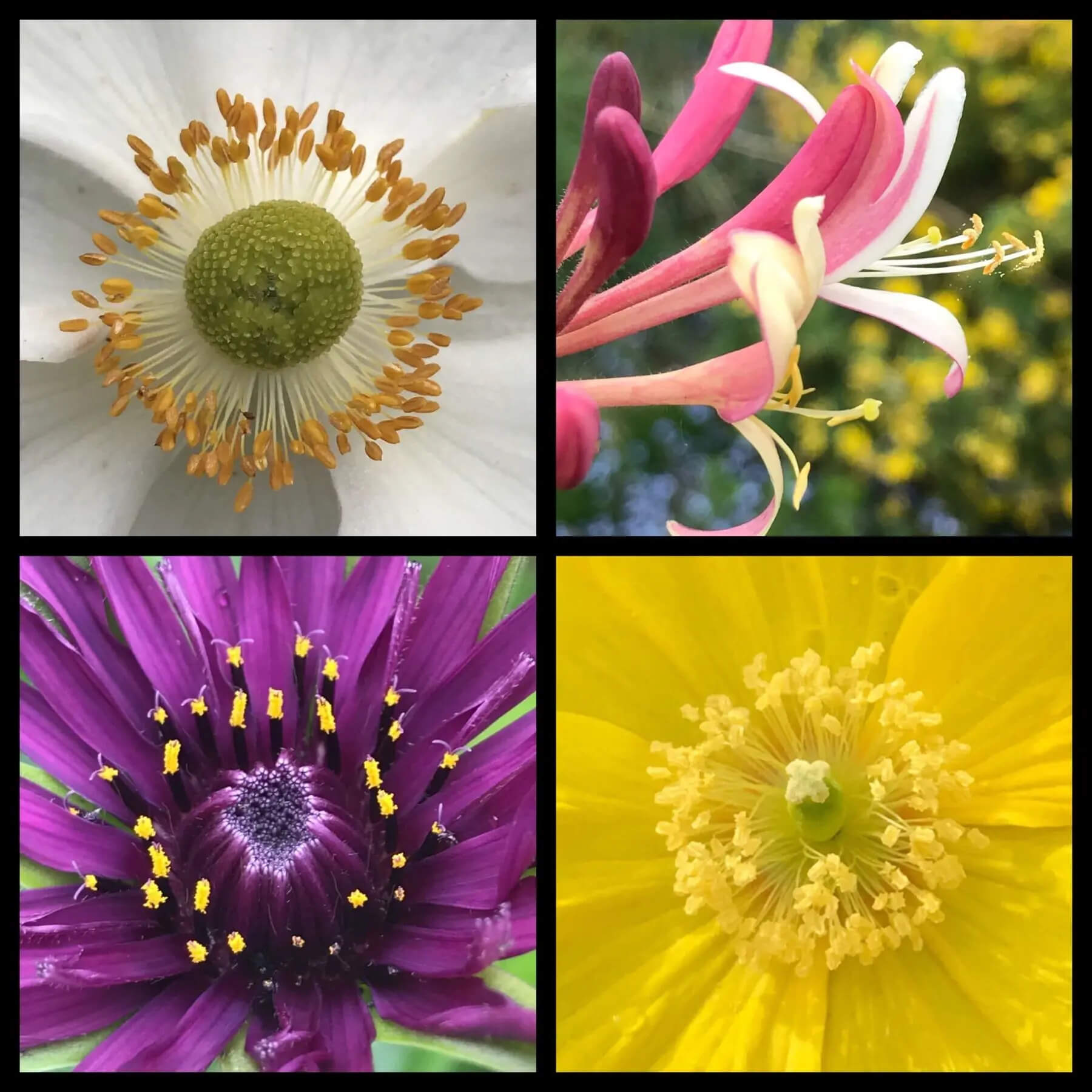
Pollination (Marcus Brown Photography) – “Very much like to photograph nature images and plants plus flowers especially. The whole process of pollination fascinates me and the way that new seeds and then plants are created. Our garden is among my favourite places – being in touch with nature is so important in our lives.”
Amazing photos! We’ve seen how important pollinators are & the benefits of urban gardens for them – and access to nature really is good for us! We love this research from Exeter Medical School (part of the University of Exeter) which shows that moving to a greener area can improve mental health – one of the reasons why we’d love green walls + a rooftop Eden on our Science Centre!
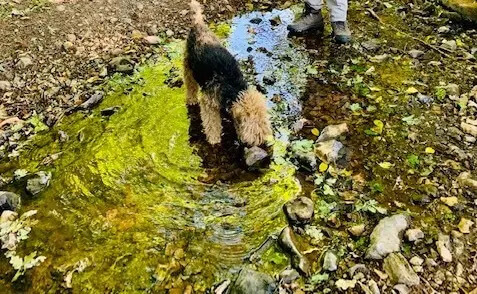
Dazzling Green Reflection (Margaret, Ottery st Mary) – “What struck me was the incredible green, distorted reflection of the tree above, in the water below, taken at around 7pm. I am an artist but love the idea of the science behind an image like this.”
We love the dazzling reflection effect & also (because we’re wave physics nerds) the wave-fronts on the water’s surface, emanating from the dog’s paws! The dog is a source of energy in this little puddle, shown by these waves!

Oh what a glorious thing to see, a perked up little busy busy bee! (Amy, Nantwich) – “This is a photo of the very weak bee I gave a helping hand to, a drink of sugar water later, after perking up, transferred onto the mountain cornflower (Centaurea Montana) to do what bees do best!”
This particular cornflower (Centaurea Montana) seems to be a favourite of bumblebees, compared to other bee species, according to this study (check out Fig 3). As discussed in this article from the Royal Society, biodiversity is so important to bees, & urban gardens could play an important role in encouraging a diverse range of bee species. We also rely on bees for biodiversity in nature (as important pollinators).
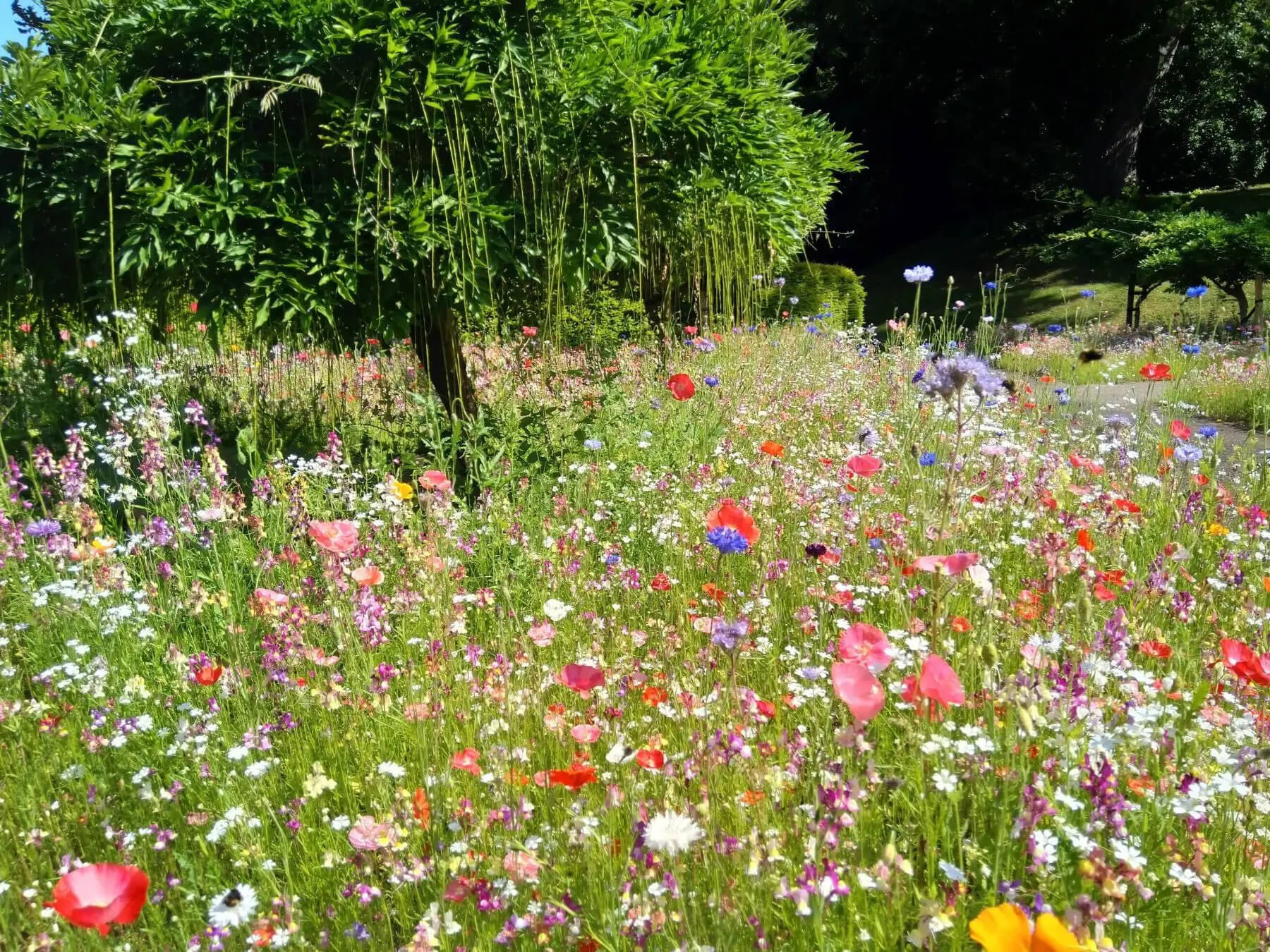
Wondrous Wildflowers (Natalie, Exeter) – “I think this is a pretty lovely example of biodiversity for Biodiversity Day – it was absolutely humming with pollinators and other insects! Would love to see more wildflower planting & wild verges.”
Dazzling! Here’s a study on wildflower meadows suggesting perennials + early-flowering weeds (inc. dandelions) are especially good for pollen + nectar, with a nice summary here by the Scottish Wildlife Trust.
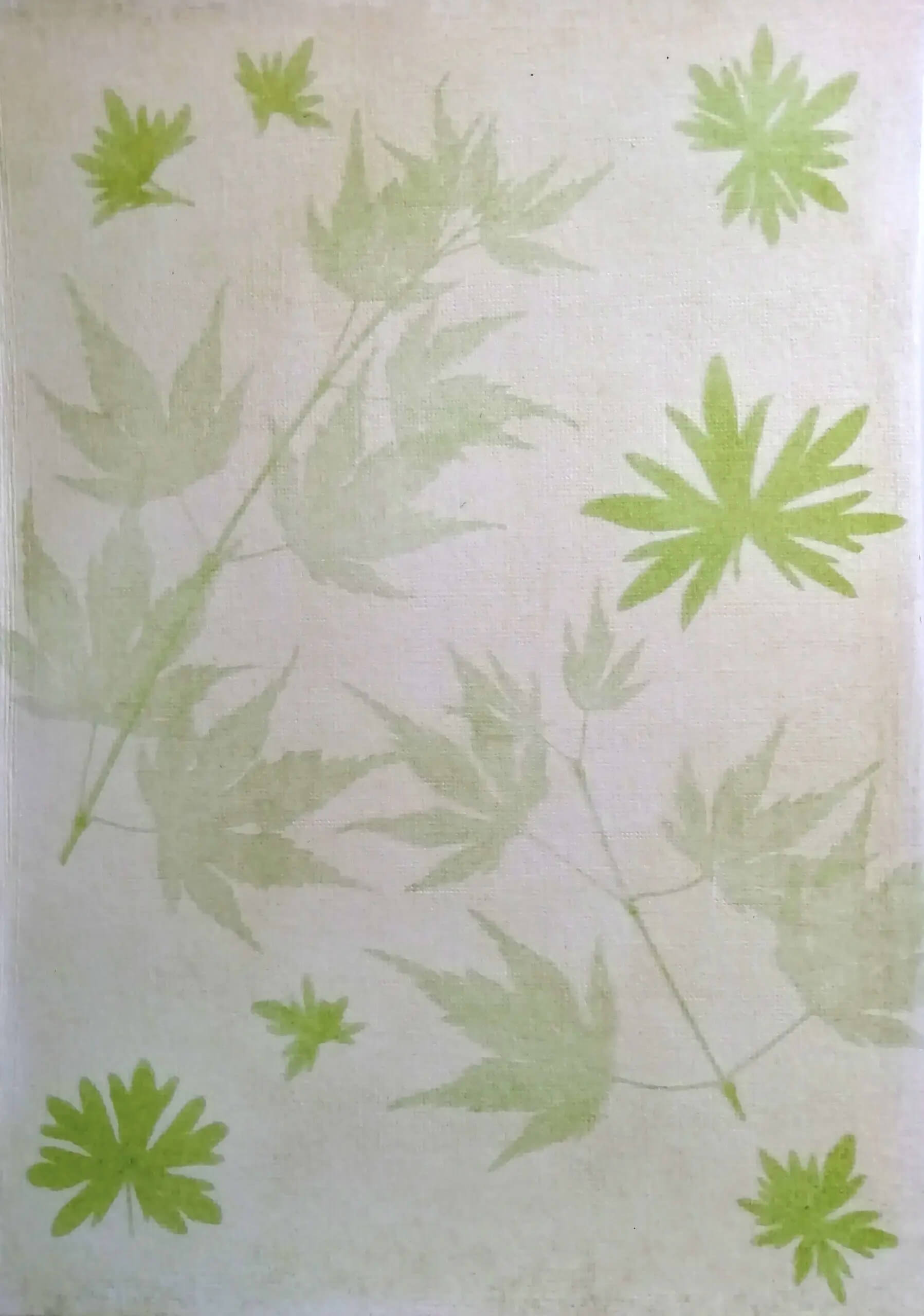
Anthotype Image of Local Leaves (Lauren, Exeter) – “I created an anthotype, a kind of natural photograph from the 19th century, by coating paper with spinach juice, arranging some leaves on top and exposing it to the sun. The rays from the sun altered the chemicals in the juice and turned the areas not covered by leaves paler.”
Such a creative alternative to a camera!
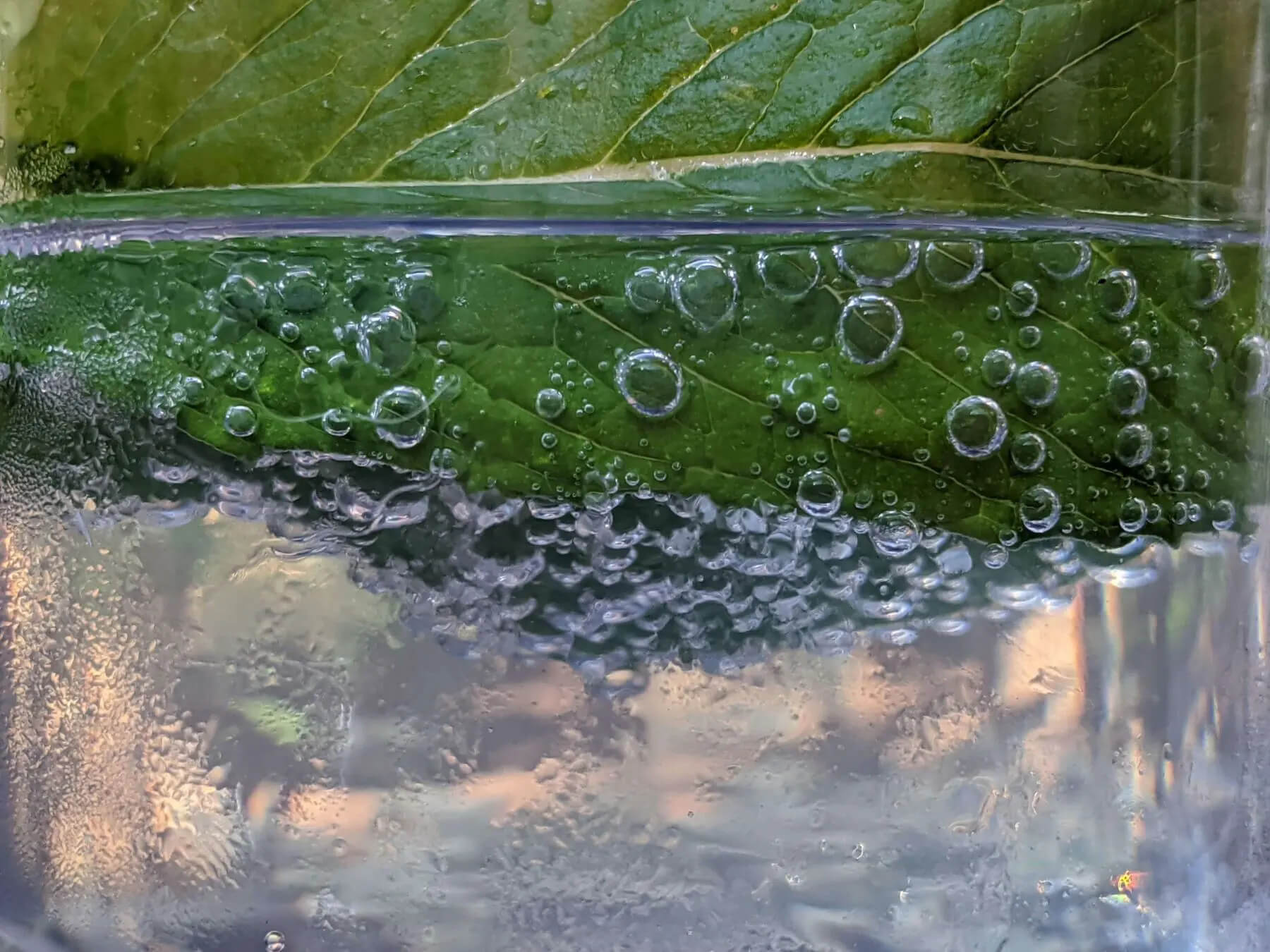
Bubbles in the Sunshine (Steve, Manchester) – “Mojito bubbles on a submerged mint leaf”
Why do air bubbles tend to collect on submerged objects? Perhaps mint leaves, being slightly furry, mean the bubbles of carbon dioxide tend to get stuck on this surface… So would smooth surfaces hold fewer bubbles? Get experimenting! For more fizzy drink physics, of course, there’s a scientific article.
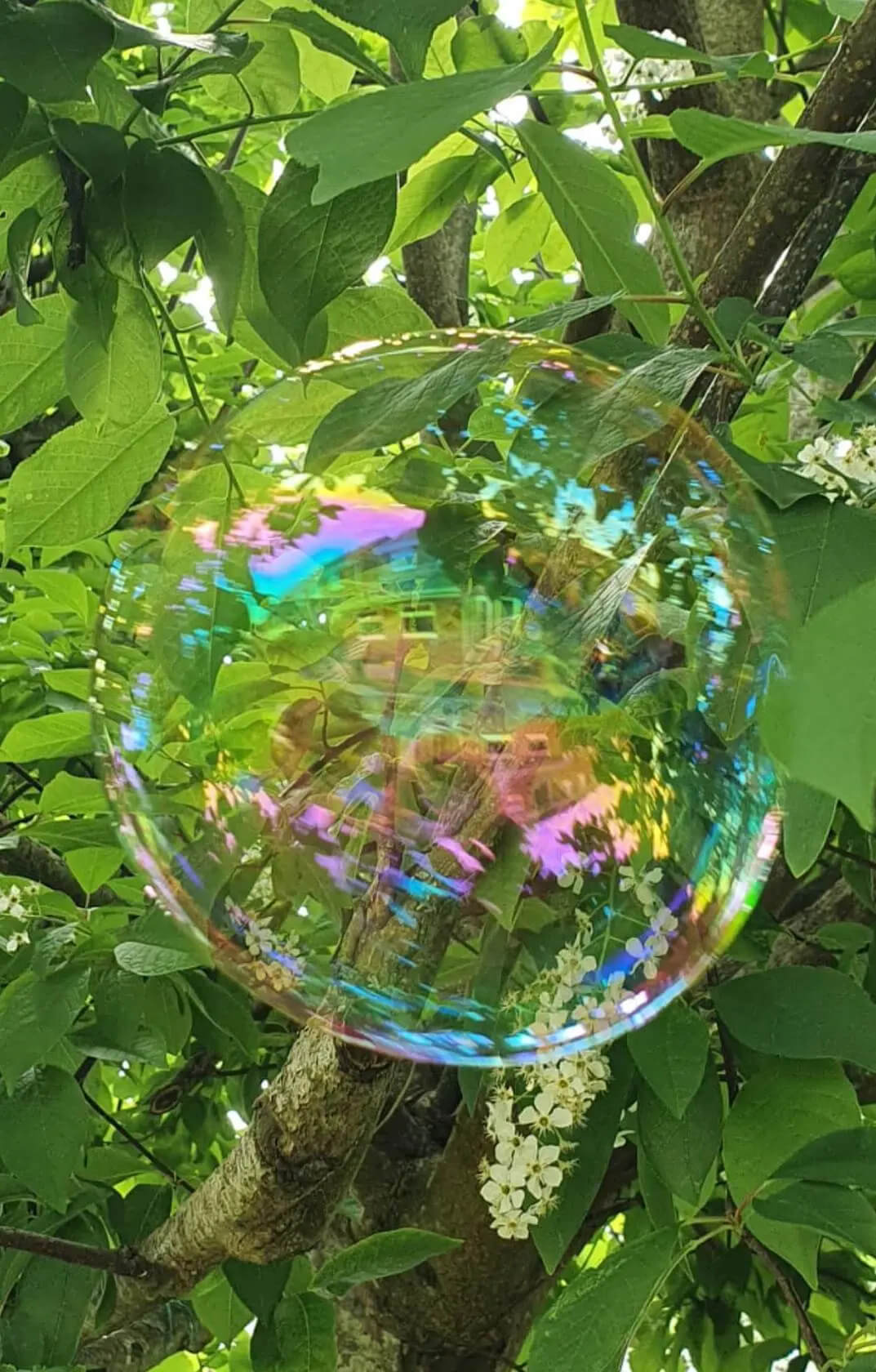
Bubble Rainbow (Jill, Exeter) – “Our house reflected in a beautiful bubble”
There’s so much science in this image! The distorted reflections, the rainbow of colours, the superimposed images from reflection and transmission – what else can you spot?
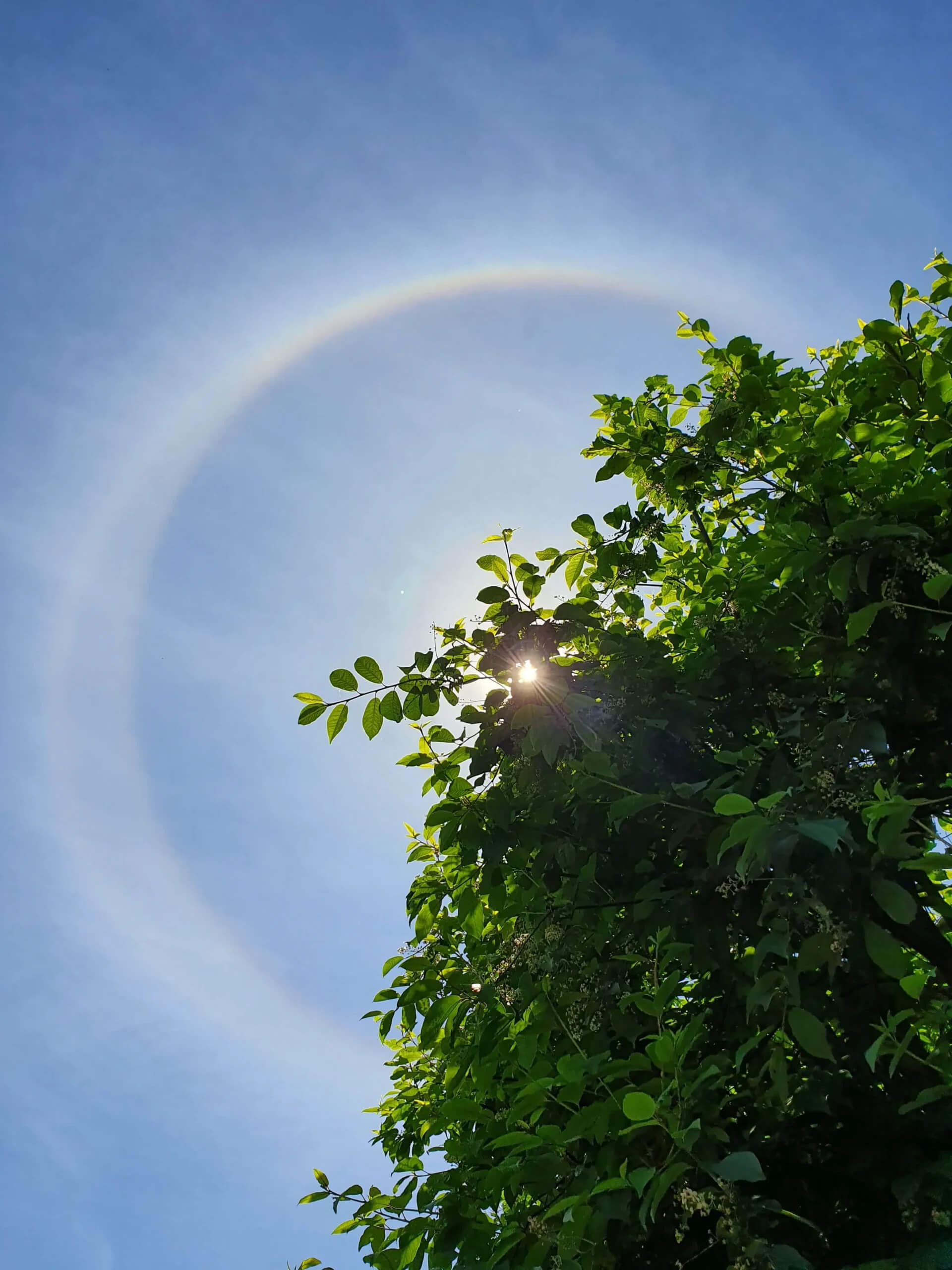
22 Degree Halo (Jill, Exeter) – “A “22-degree halo” around the sun, seen from our back garden in Exeter.”
Fantastic photo of an effect caused by light refracting off ice crystals high up in the atmosphere.
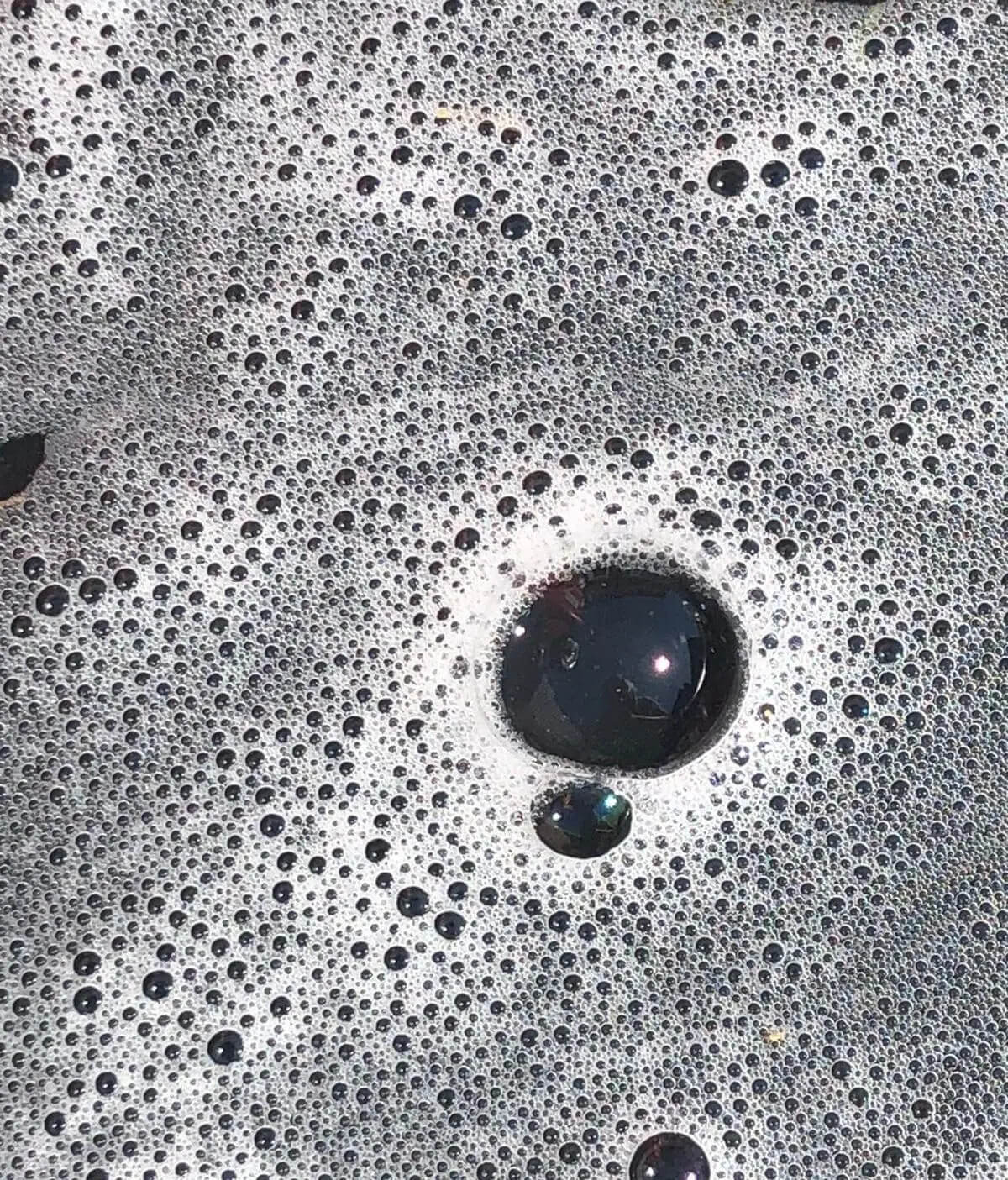
Bubbles (Steph, Sandbach) – “The beauty of foamy car wash bubbles.”
Mesmerising! Question: why do the reflections of spots of light have different colours?
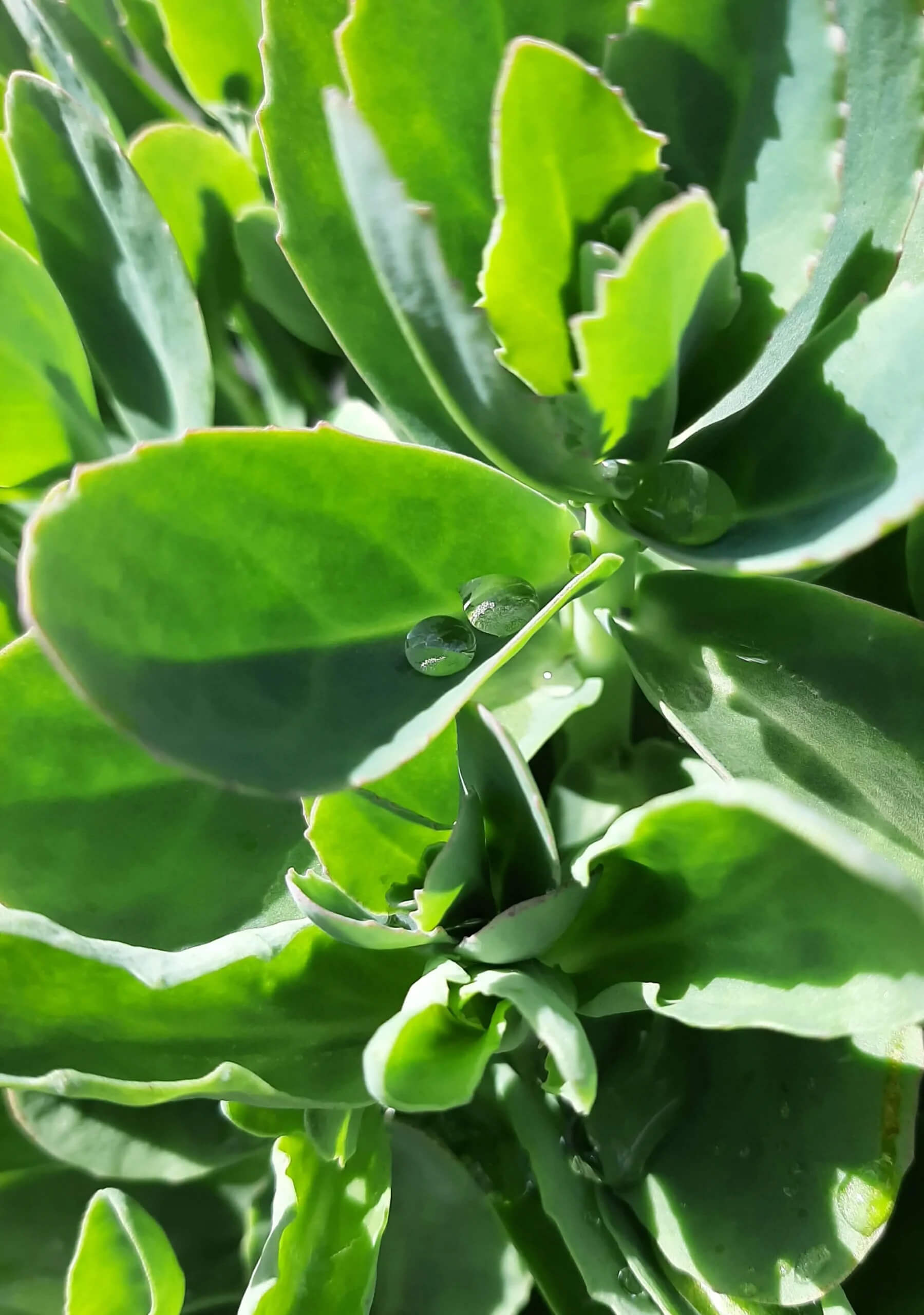
Water Droplets (Alice, Barnstaple) – “Water droplets on the hydrophobic leaves of a Sedum.”
Great example of a useful function that nature has perfected, which inspires research in physics chemistry & engineering. Check out some cool hydrophobicity research applications and there’s a great experiment activity here for young people to learn about hydrophobicity.
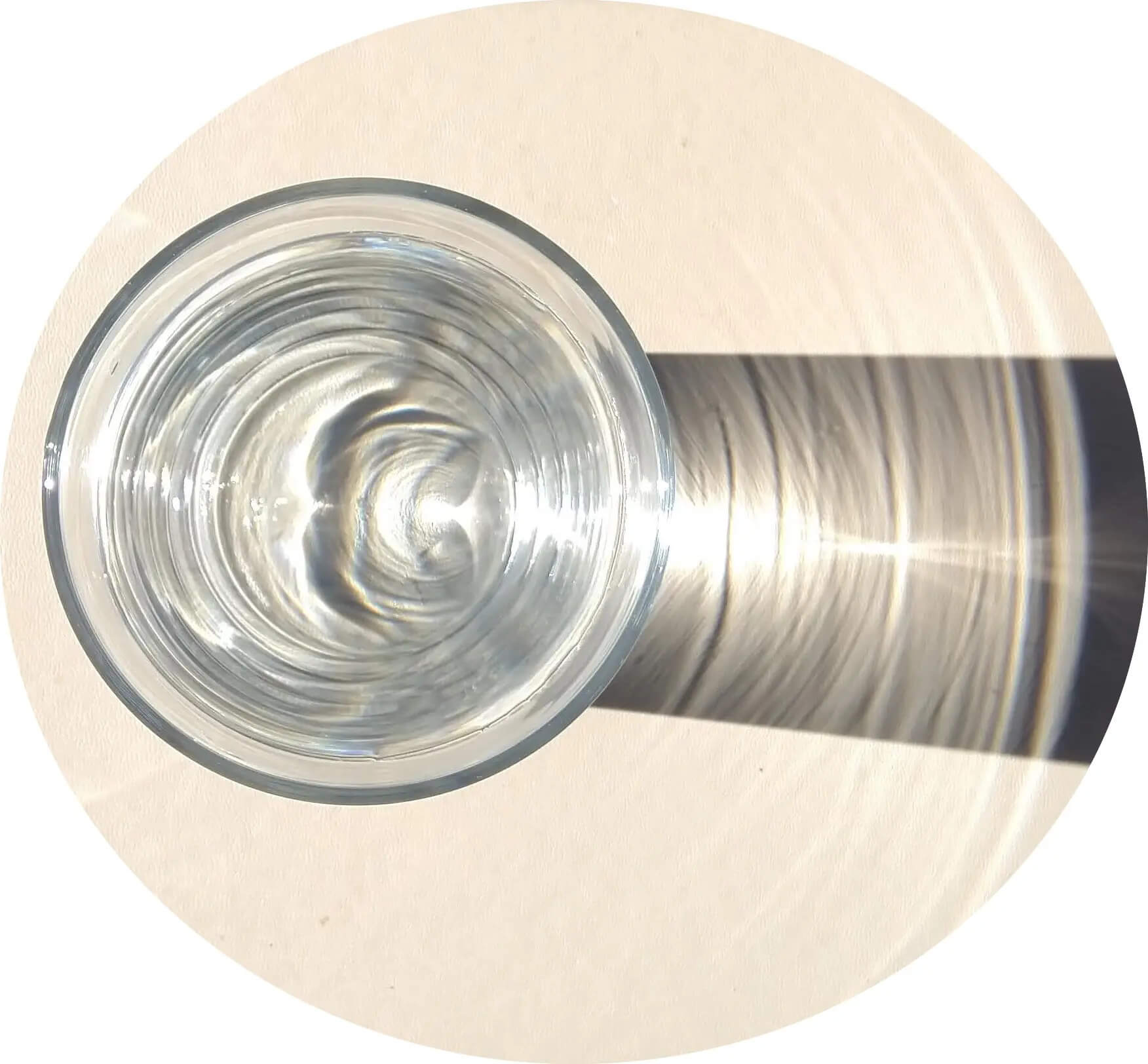
Nephroid caustics, lensing and rainbows in a sunlit glass (Natalie, Exeter) – “I’ve been enjoying the lovely sunshine out here in Exeter – and it’s making a beautiful effect on my glass of water!”
There’s a great description of a nephroid caustic here.
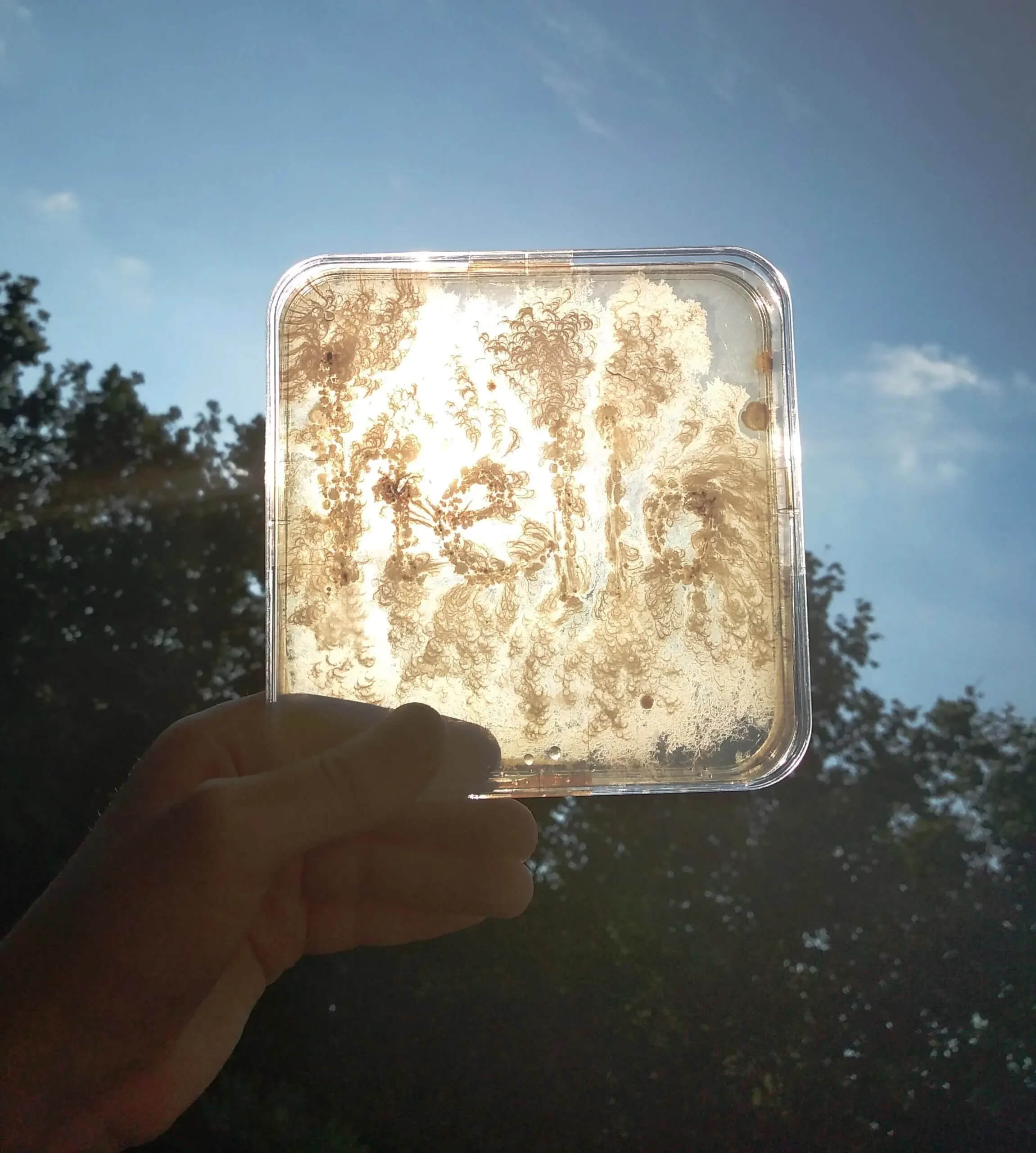
Quorum Sensing! (Ruth, Barnstaple) – “Bacillus mycoides, a common soil organism, says hello!”
We love this creative, biology-themed entry! Quorum sensing is a way that bacteria communicate with eachother (and in this clever entry – with us too!) – there’s a nice description here.
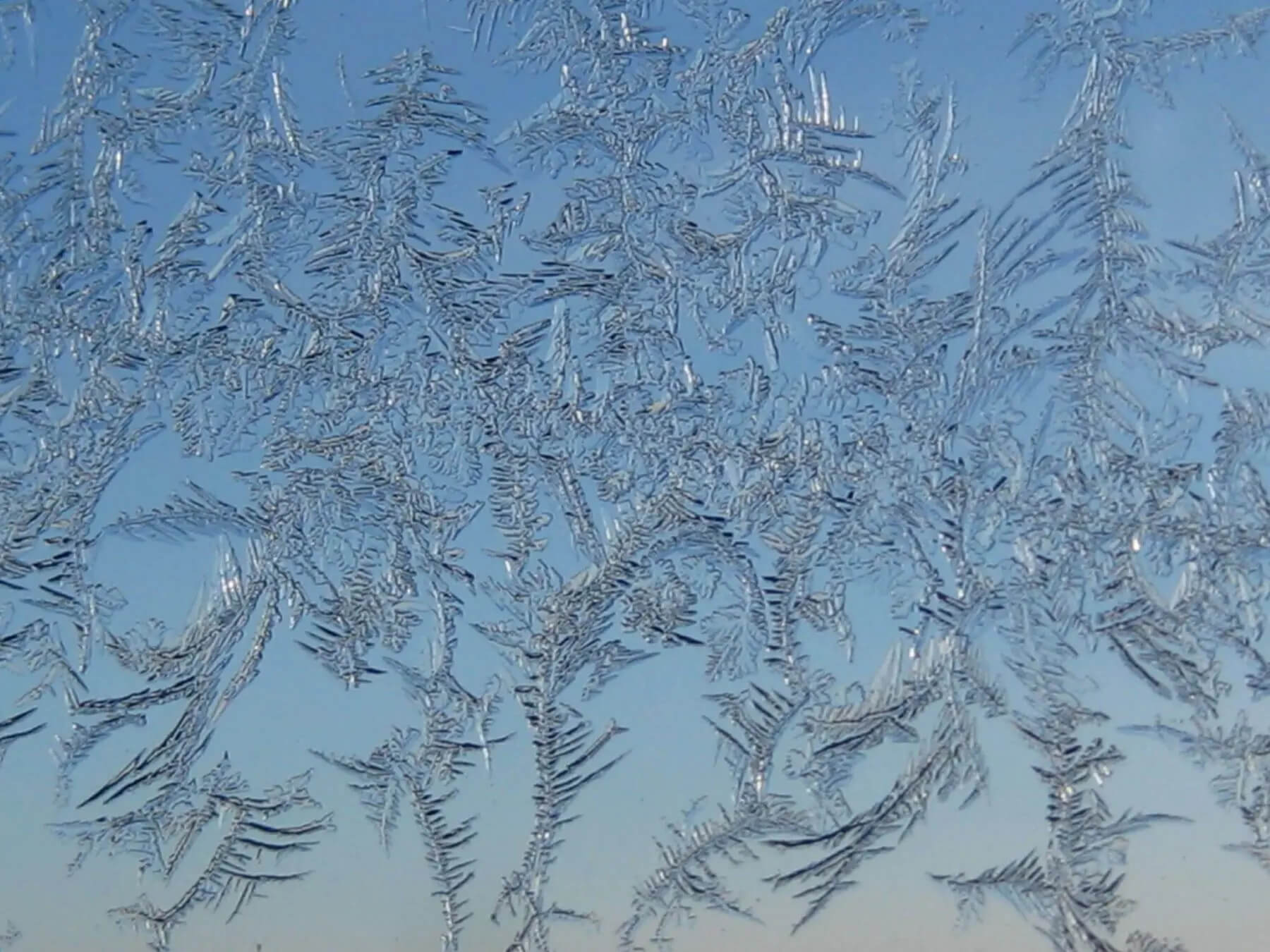
Ice crystals (Clare, Exeter) – “Ice crystals forming fractal patterns on a window”
Fractals are fascinating structures which occur in many different ways in nature – here’s a nice description.
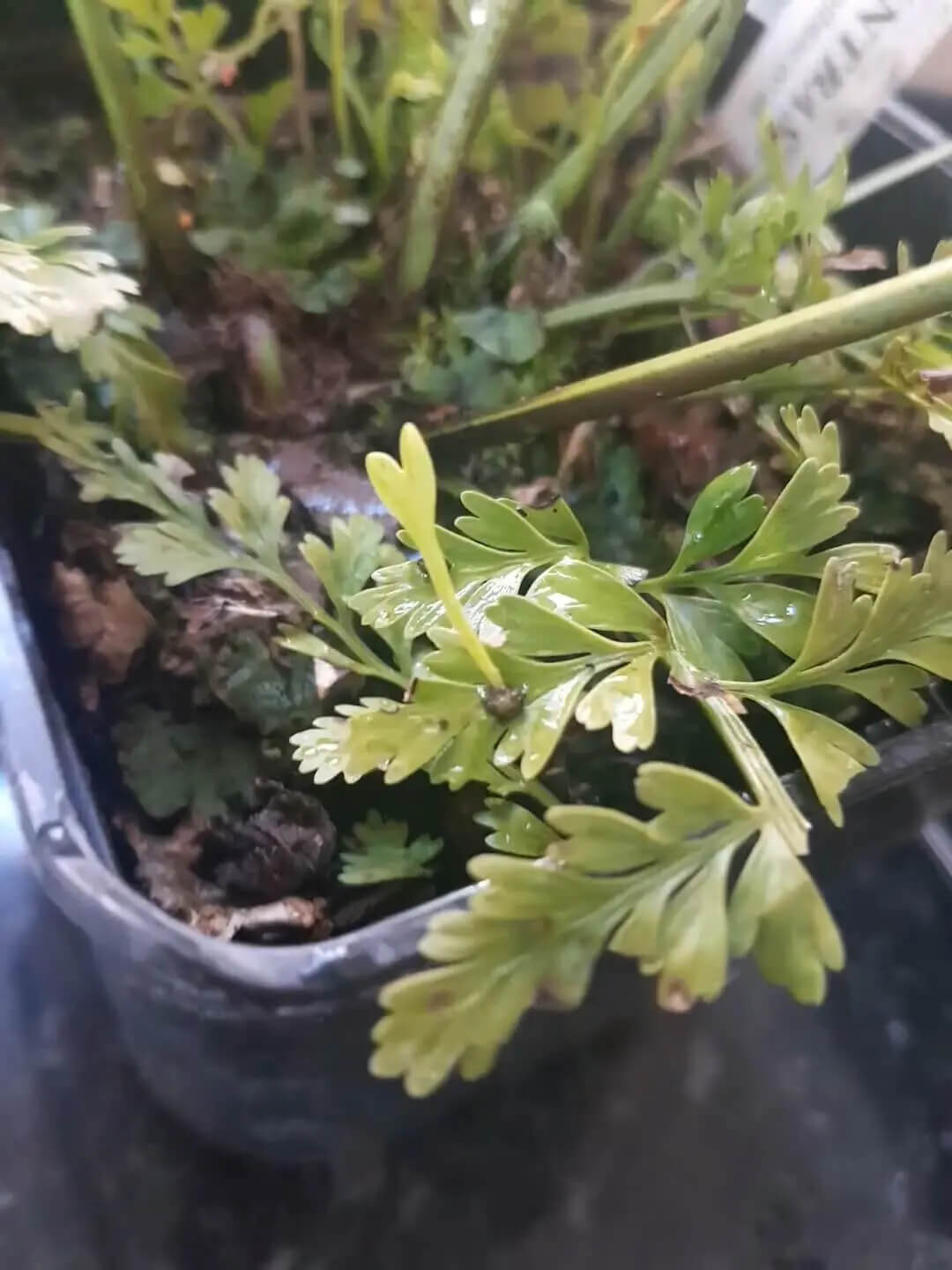
Springtime growth part II! (Jocelyn, Exeter) – “a tiny new fern from a Hen and Chicken fern grown on the mother plant!”
These little “plantlets” (or “bulbils”) then fall off and grow independently – no pollinators required!
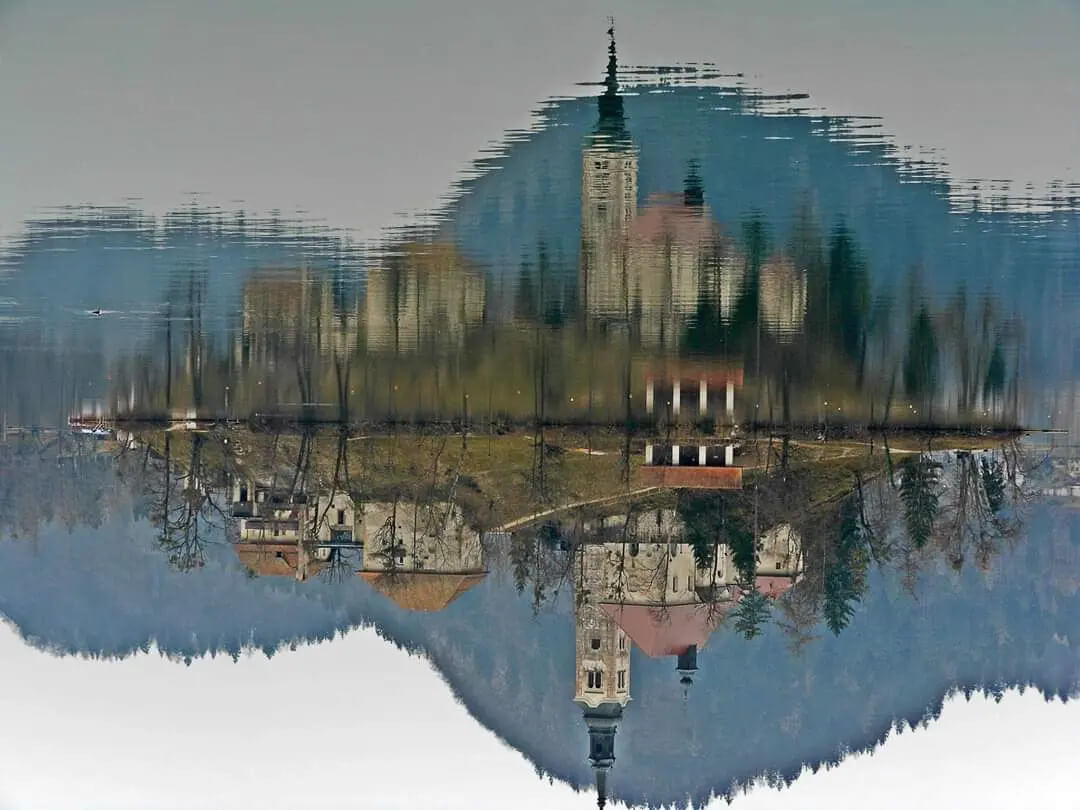
Perfection in Reflection! (Nick, Manchester) – “This image is Lake Bled in Slovenia. I was there studying for 2 months during my master’s and had a chance to discover some gorgeous places. I flipped this photo upside down and I think it’s still the best photo I’ve ever taken. Perfection in reflection!”
Fantastic photo – we love the burring effect of the image due to all the tiny ripples in the water!
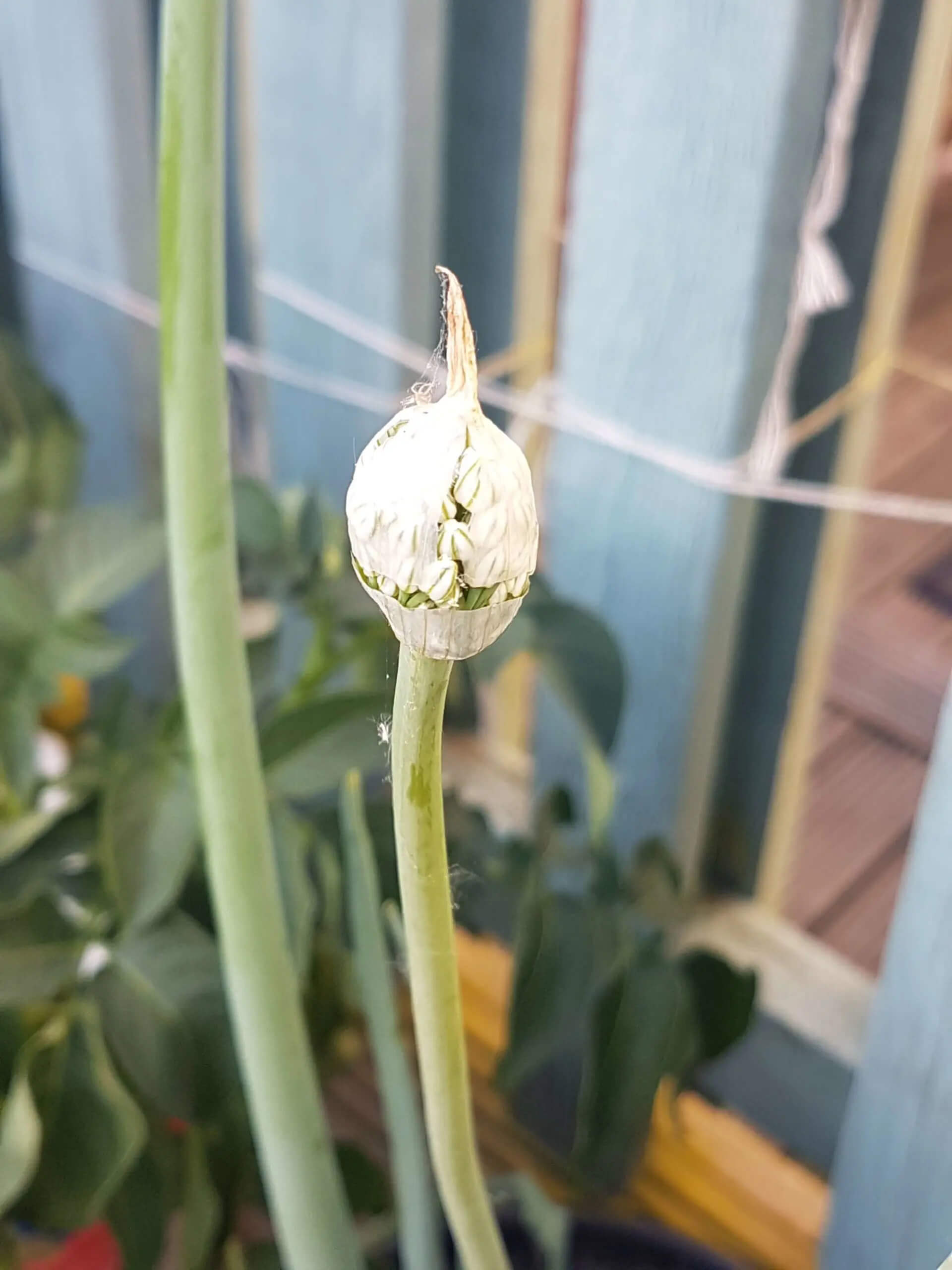
Springtime growth part I! (Jocelyn, Exeter) – “A garlic flower breaking its casing and about to bloom.”
Amazing! And how do flowers know it’s spring? It seems that longer days are a helpful sign
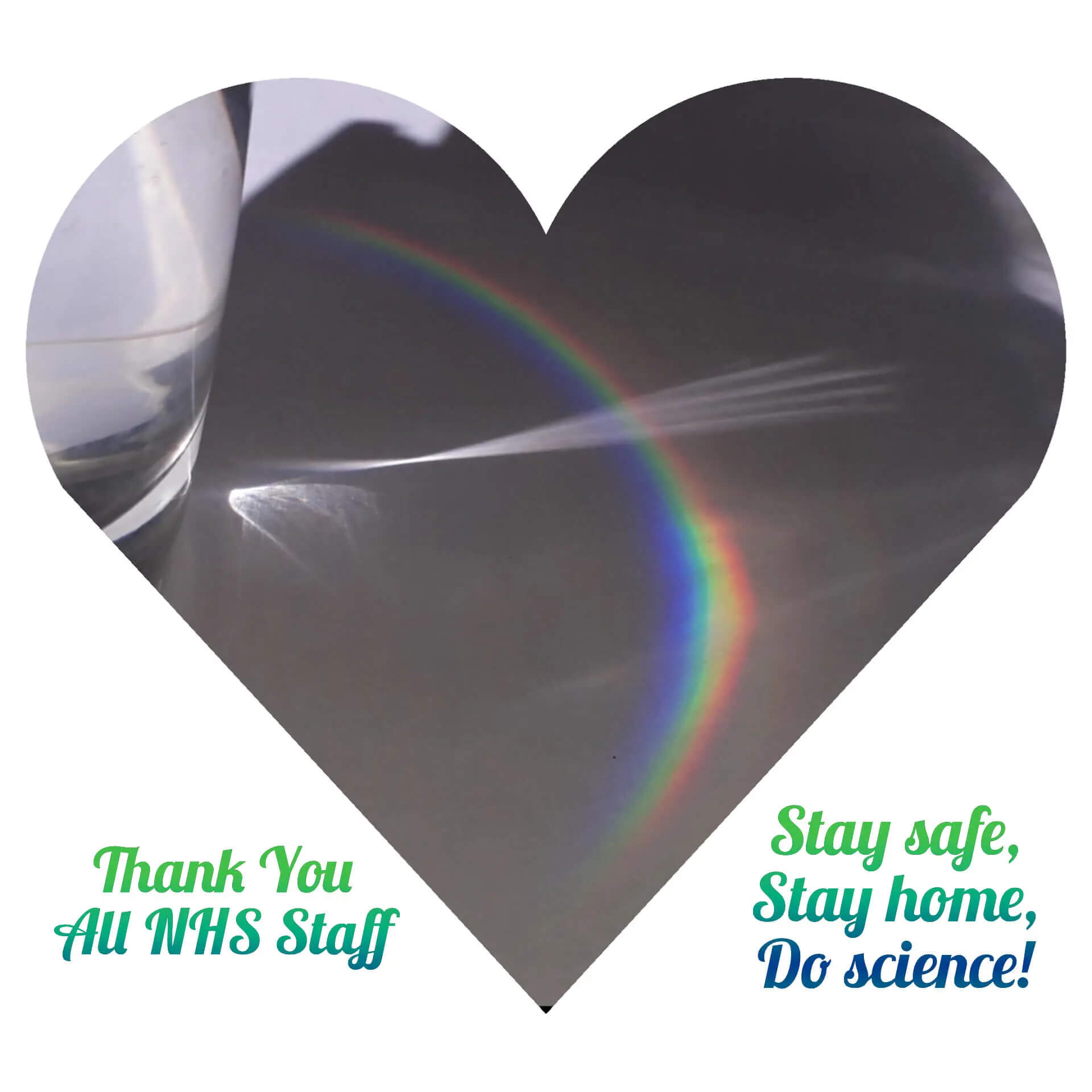
Rainbow Experiment (Kieran age 8, Bude) – “I took this photo during an experiment I did at home to cause sunlight to refract (bend) as it passed through a glass of water causing the light to separate into colours in the same way it does when it passes through rain drops.”
What an awesome photo! Really impressed with how Kieran has made such a clear rainbow, and also his excellent scientific description! Future scientist in the making!
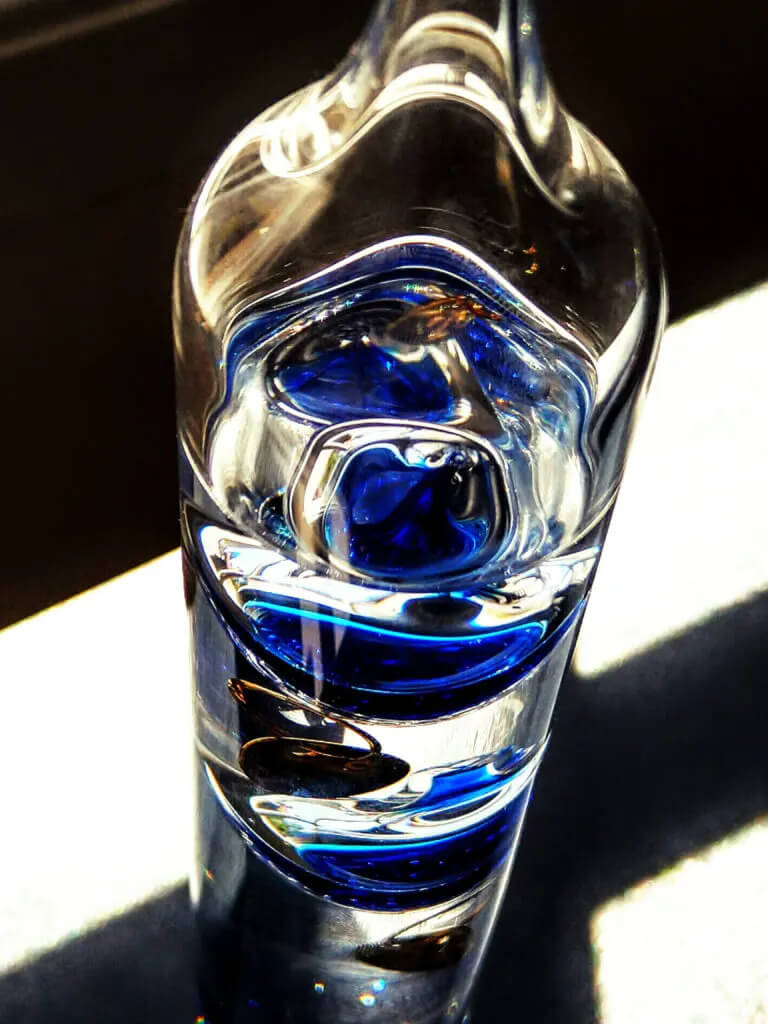
Light does weird things around glass and water! (Aimée, Exeter) – “I love the way the blue glass bulbs inside this Galilean thermometer look so warped and misshapen in this photo. Light does weird things around glass and water!”
What a beautiful photo! The change in refractive index between air, glass and the different liquids makes the light change direction, to create these amazing distortions!
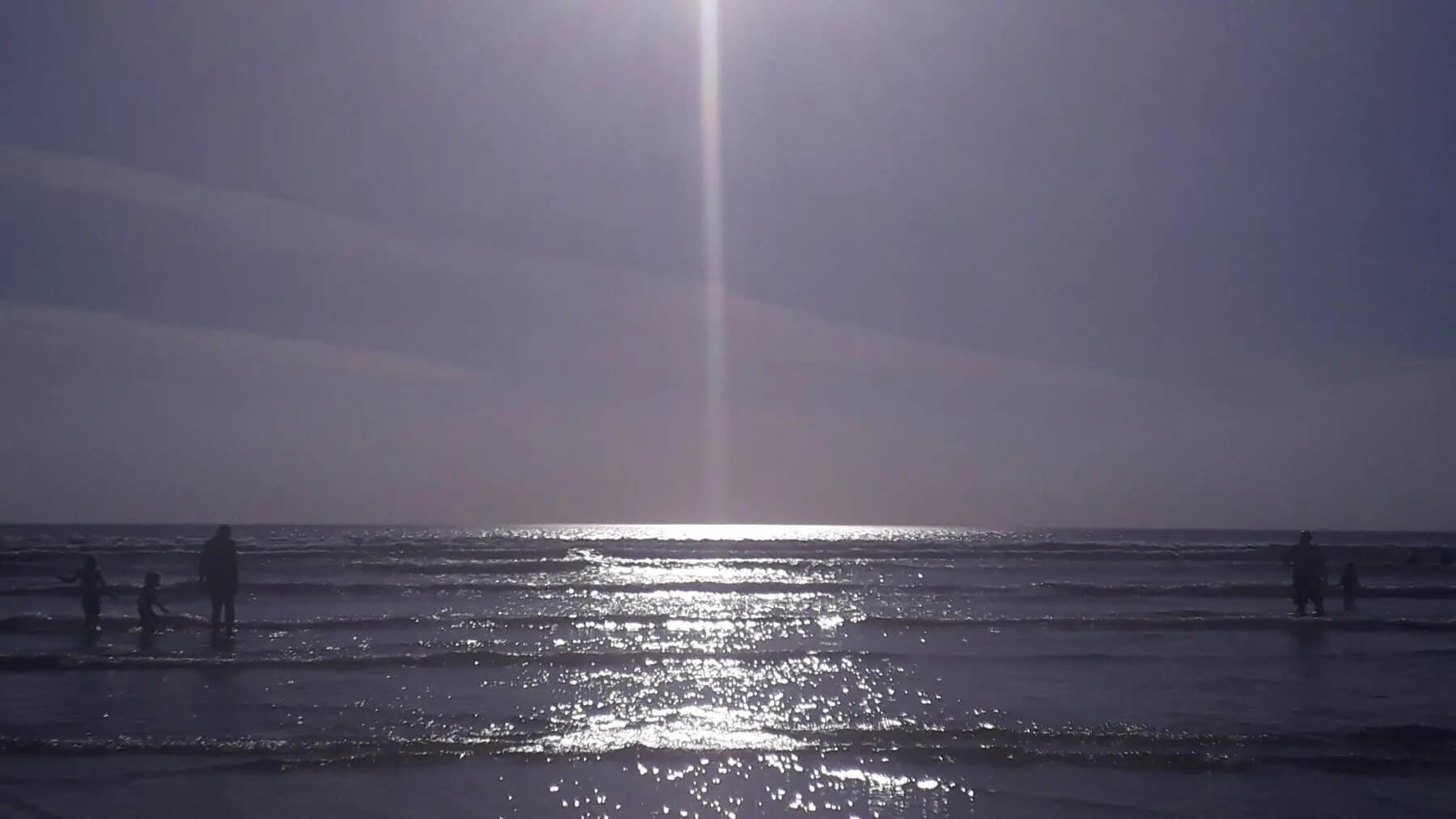
Sunbeams and Reflections (Riegan age 5, Bude) – “It looks like a spaceship in the sky with a big beam coming out of it into the sea & spreading out all over the ocean”
Such an amazing image & super imaginative description! Spot the rainbow effect in the sunbeam too!
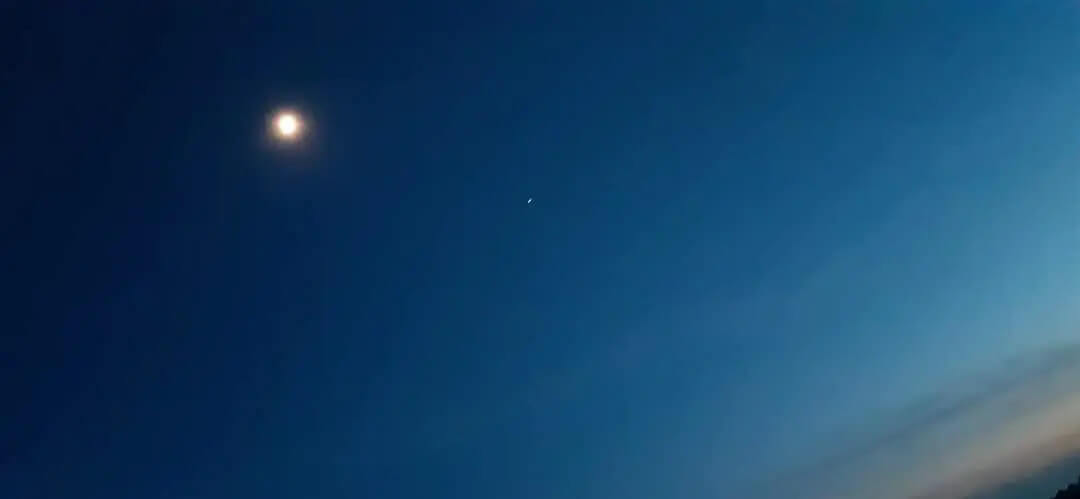
Maybe the ISS, maybe the SpaceX rocket! (Fran, Plymouth) – “SpaceX doing a fly past (or maybe the space station!)”
Amazing!! We suspect it might be the International Space Station (ISS) as the SpaceX rocket would have been rather dim to photograph, but it’s awesome either way! Notice the moon is that big bright spot, and the ISS (we think) is the tiny speck of light near the centre of the image.
Did you know that you can see the ISS any day of the week? Put your location into the NASA Spot The Station website and it’ll tell you where to look and when! Have a go, and marvel at this magnificent orbiting laboratory, flying across the sky at 17,500mph!
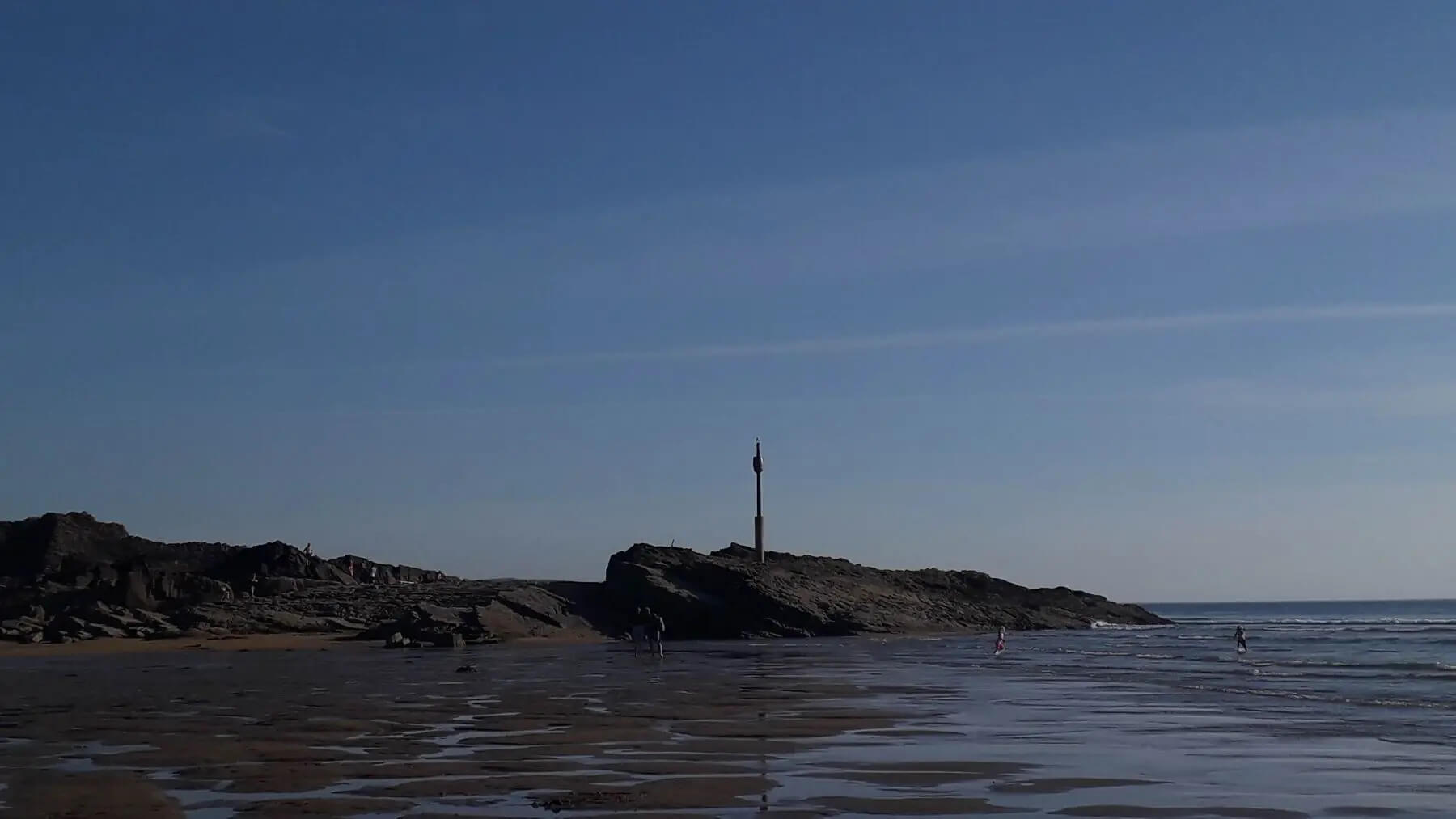
Sunbeams, shadows, clouds and ocean tides (Kieran age 8, Bude) – “Sunbeams, shadows, clouds and ocean tides all together with lots of footprints in the sand. We have not yet looked into what causes clouds.”
Kieran is definitely our most enthusiastic contributor so far! There’s lots of science related to clouds – and of course, our local weather (amongst many other things) experts the Met Office have a fantastic detailed guide to clouds here. There’s also a great description of the science behind clouds on the NASA website, with an experiment you can do at home, to make your own cloud in a bottle!
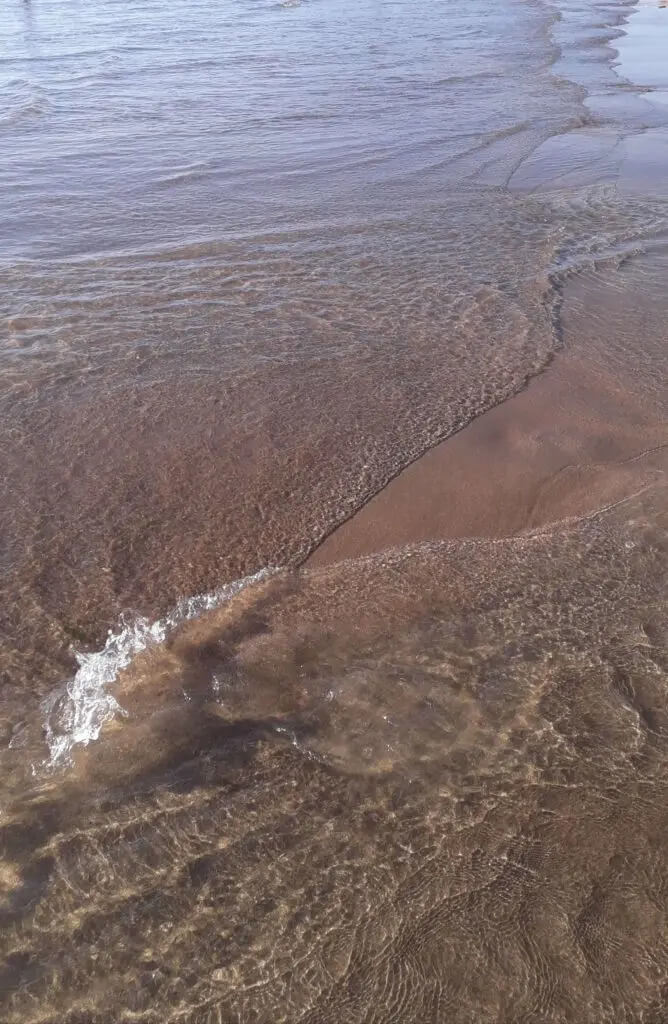
Sea Science (Annabella age 7, Bude) – “looks so pretty with all the patterns and shadows and the light reflecting off the sea.”
Fantastic! There’s so much science to observe here – waves, reflections, shadows… what else can you spot?
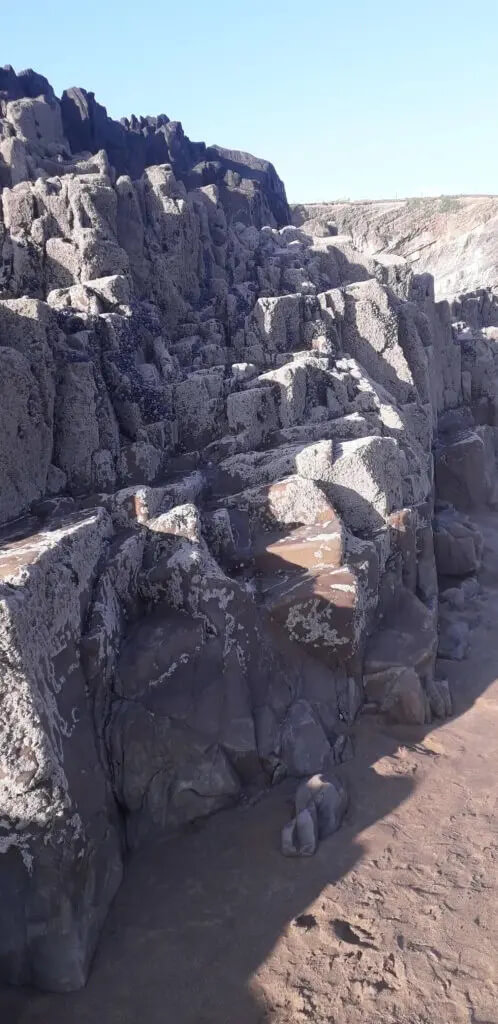
Coastal Erosion (Kieran age 8, Bude) – “During a trip to the beach I observed this example of Coastal Erosion and shadows that looked like great art!”
Looks like there’s a lot of geology to talk about here, let’s see if we can get some experts to comment!
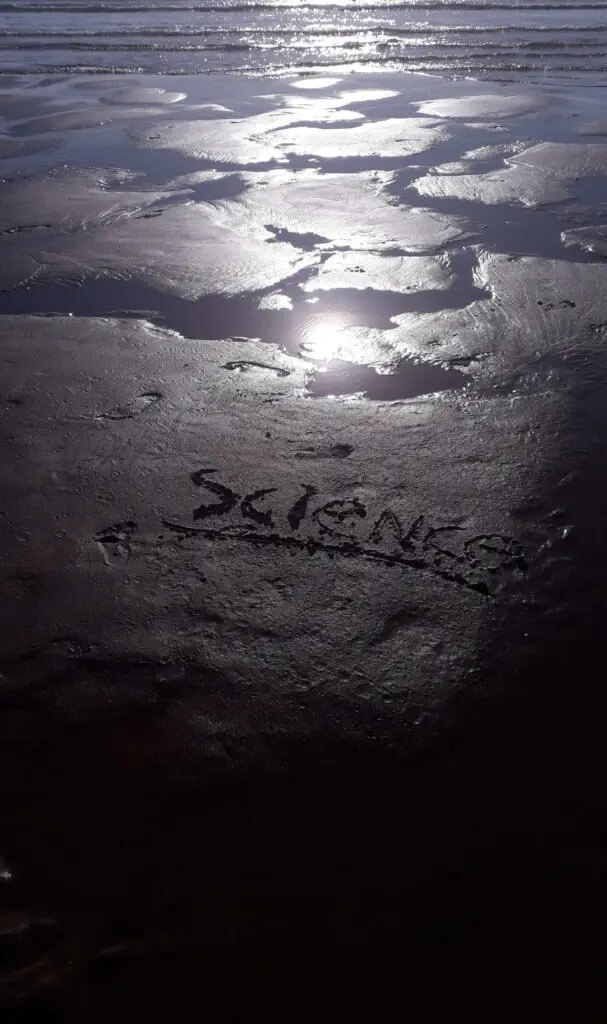
Science in the Sand (Kieran age 8, Bude) – “During a trip to the beach yesterday practicing safe distancing observing both the gravitational pull of the sun and the moon as well as shadows and sun beams. I wrote science on the sand for added art!”
We love this image and the fantastically philosophical and scientific description! Although we can’t directly feel the gravitational pull of the sun and moon (since the pull of the Earth overwhelms them both), Kieran is right in that, at the seaside, we can see one dramatic effect of the moon’s gravity: tides! The gravitational pull of the sun is really most keenly “felt” (psychologically at least) over of a year; it’s what keeps us orbiting the sun over this time (and every year since and to come)!
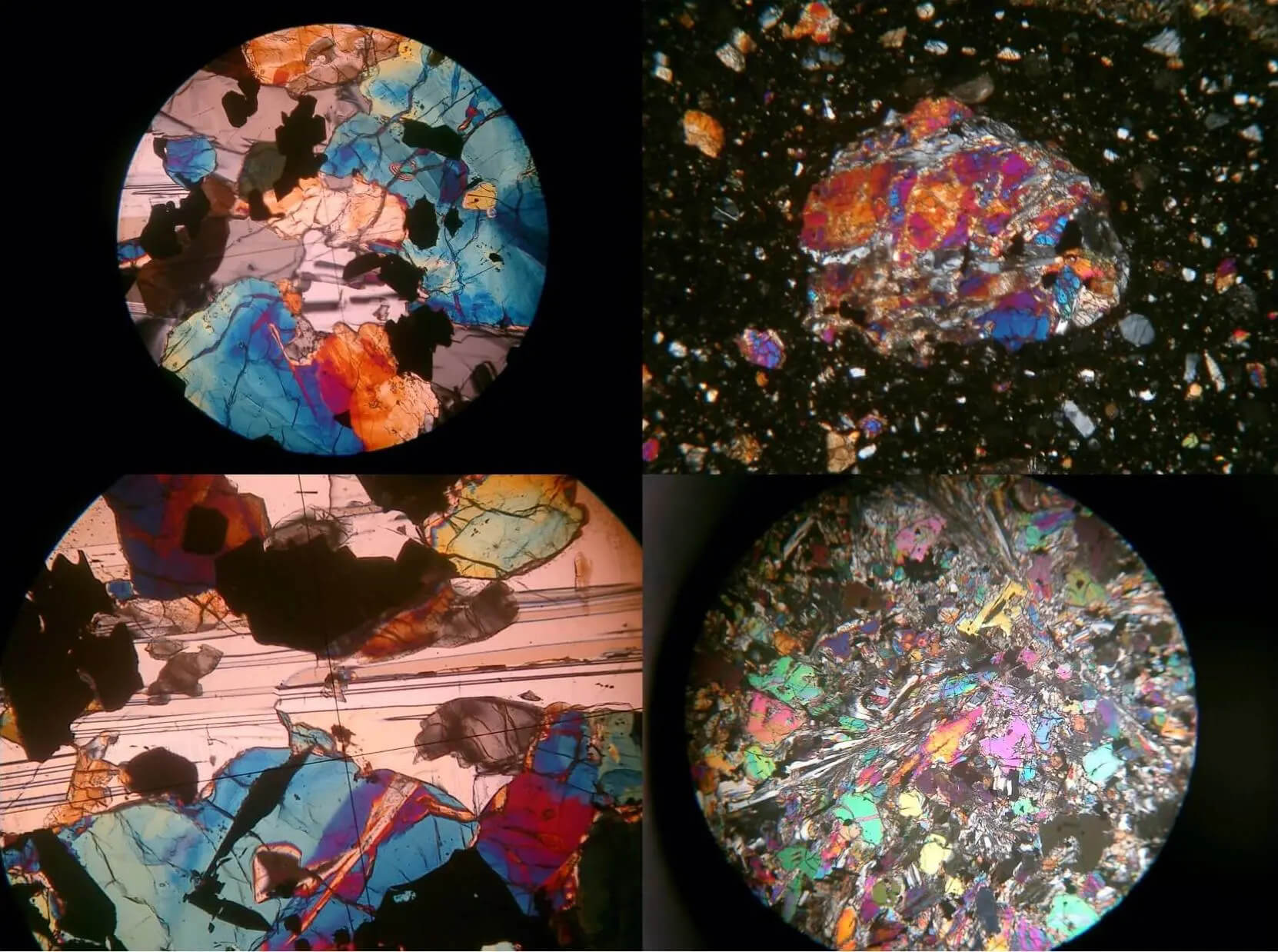
Polarised images of Moon rocks (Adrian, Canterbury) – “Images are of thin sections of rocks collected on the Moon during Apollo missions, and were taken by me in my classroom using a set of samples donated by NASA for use in UK schools and universities. Viewed with polarised light, hence the colours.”
What a kaleidoscopic set of images (and super cool that these are images of actual rock from the Moon!). Polarisers are a type of filter for light (some sunglasses are polarised to reduce glare) – learn more about the interesting physics here. The Moon rock shows different colours when seen through polarising filters due to an effect called birefringence – you can learn more about the physics of birefringence + try out your own experiments with sticky tape here.

Moon Rock (Adrian, Canterbury) – “Image is of a small piece of rock collected on the Moon during Apollo missions, and were taken by me in my classroom using a set of samples donated by NASA for use in UK schools and universities. Viewed in natural light at low magnification and shows the actual colour of the rock.”
Fascinating image! You can learn more about moon rocks, and even look at them through a virtual microscope, on the OpenLearn website.
South West Research Exhibition
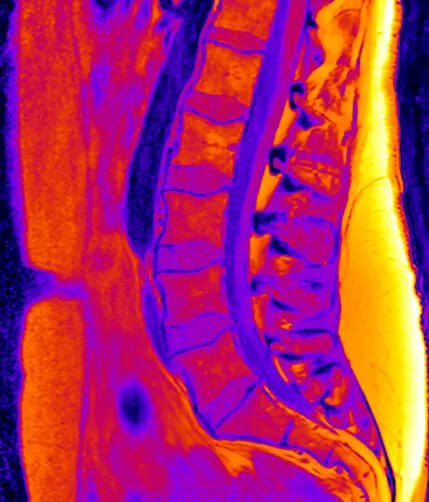
MRI of Spine (Dr Jude Meakin, University of Exeter – Physics – Biomedical Physics group) – “This image is a magnetic resonance image of the human spine. Images such as these are invaluable in my research so that I can see the detailed anatomy of the spine & use the information to create models that help us understand their function.”
Jude is using physics to understand the mechanics of the human spine in her research. We love this fantastic example of how interconnected STEMM research can be: using physics, biology + medicine to solve problems!
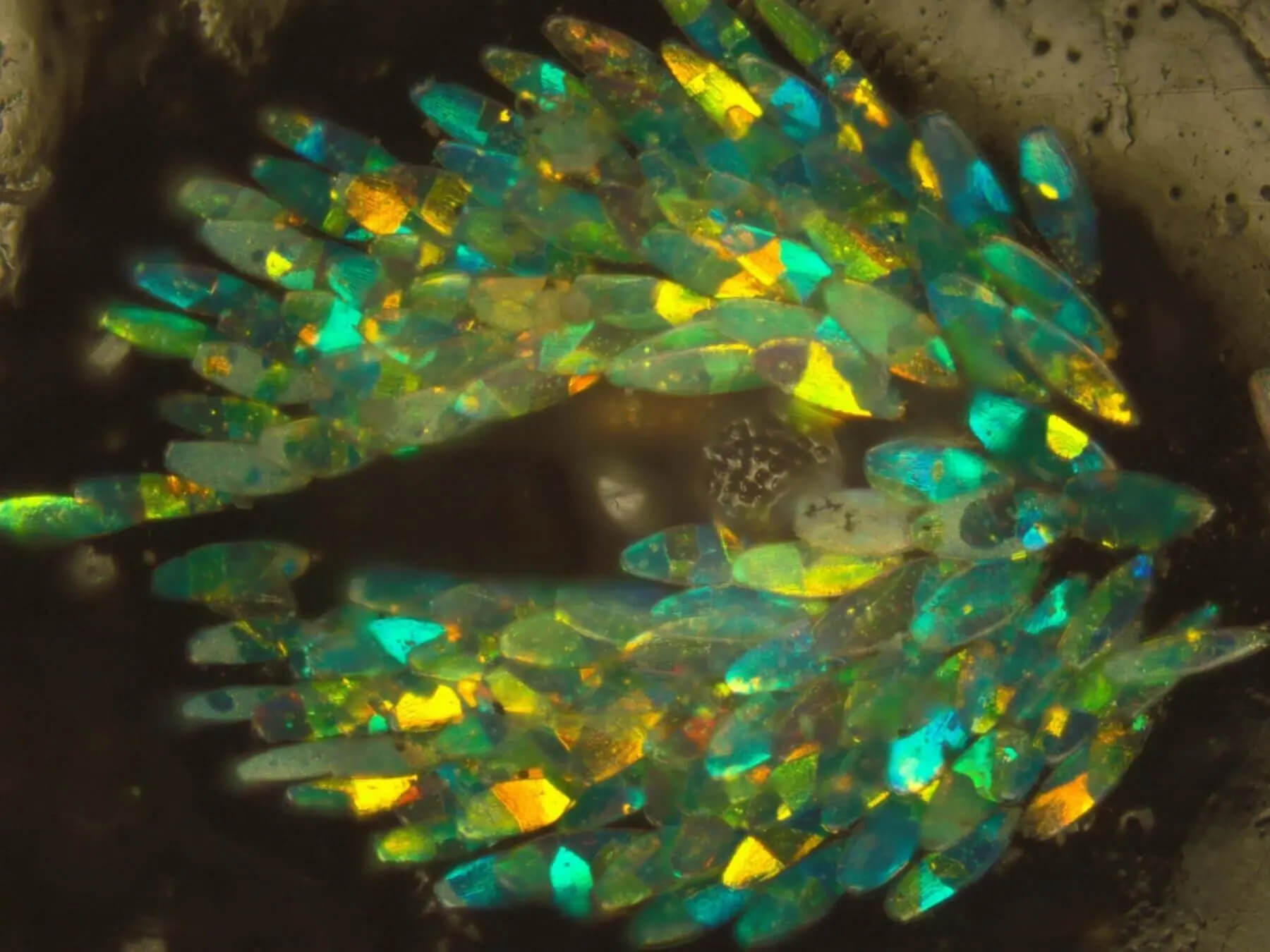
Iridescent Beetle Wings (Dr Sébastien Mouchet, University of Exeter – Physics – Natural Photonics group) – “These are scales covering the wings (called elytra) of the Brazilian diamond beetle. They display bright iridescent colours due to light interference within optical structures (photonic polycrystals) embedded in the scales.”
This stunning photo is a great example of the research in natural photonics carried out at the University into structural colour (colour that doesn’t originate from pigments). Another beautiful + functional result of evolution that we can take design inspiration from – we could build different versions of these structured materials, to make beautiful colours without all the chemicals!
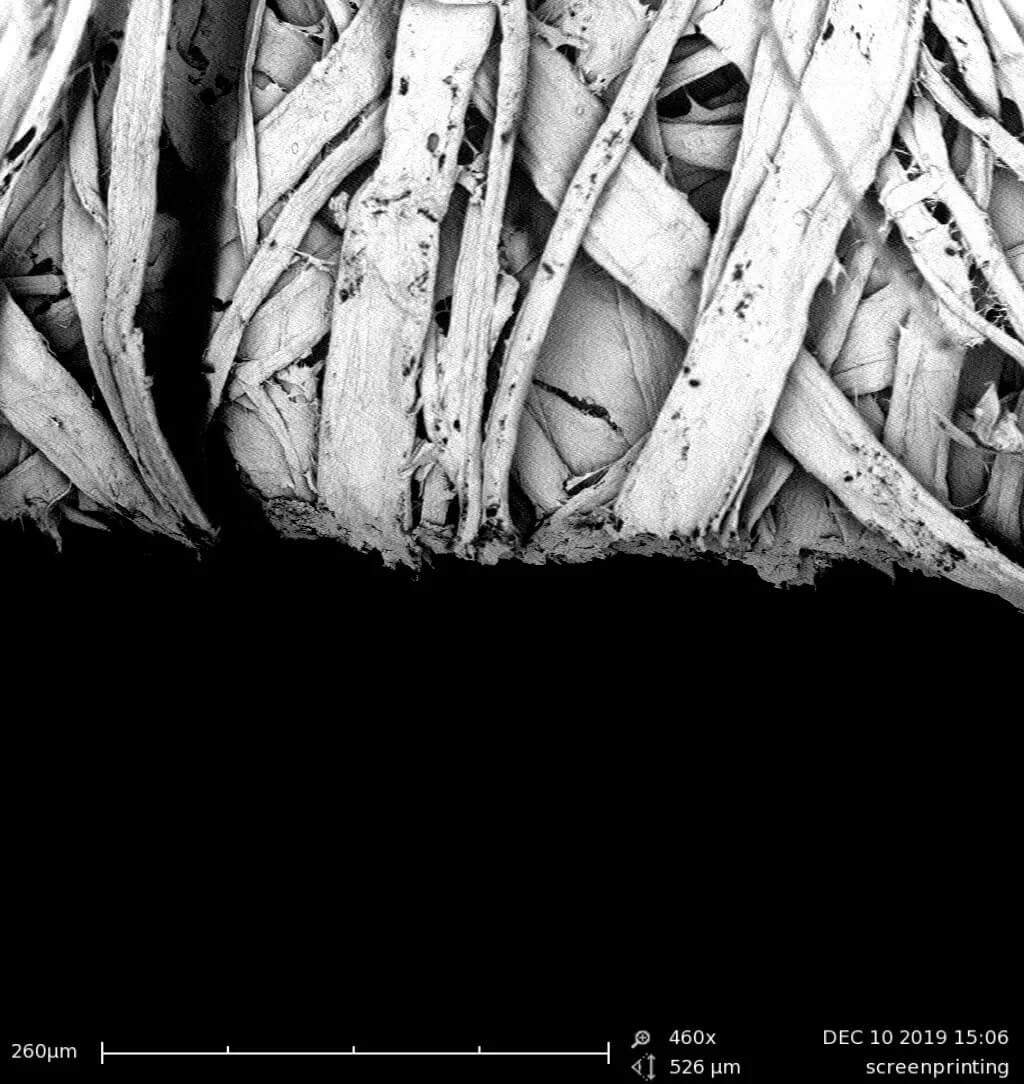
Trimmed Paper Edge (Dr Damien Leech, UWE Bristol – Centre for Fine Print Research) – “The trimmed edge of piece of paper under a scanning electron microscope. All this individual fibres that can construct the sheet can be seen to be interwoven into a dense, disorganised matrix – this structure provides the classic white that we expect from a sheet of paper.”
Amazing image! We love how meta it is: an artistic shot of a scientific image of an artistic medium! Notice the scale bar is 260 micrometres, around 3x width of an average human hair!
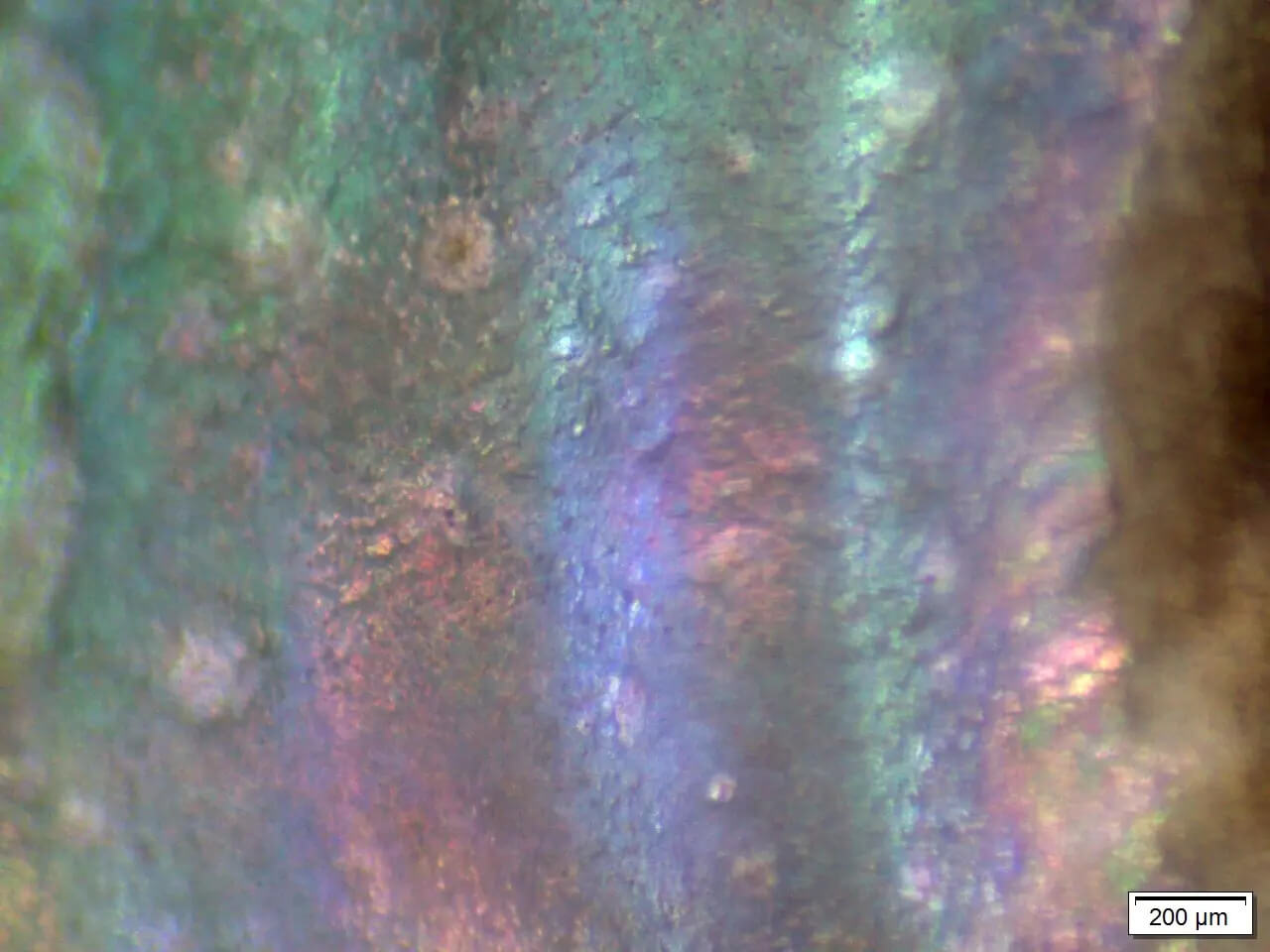
Mother-of-Pearl (Dr Damien Leech, UWE Bristol – Centre for Fine Print Research) – “The Purple Flattop Shell is a really common find on South UK beaches, known for the distinctive purple patterning. However, general wear and tear tends to pull off the upper layers, revealing an even more striking colour beneath. This nacreous layer, more commonly known as mother-of-pearl, displays a range of structural colours can be seen most prominently when at an angle to the observing eye (hence how out of focus it is!).”
Another great example of structural colour in nature! Interestingly, this effect was understood over 100 years ago for mother-of-pearl.
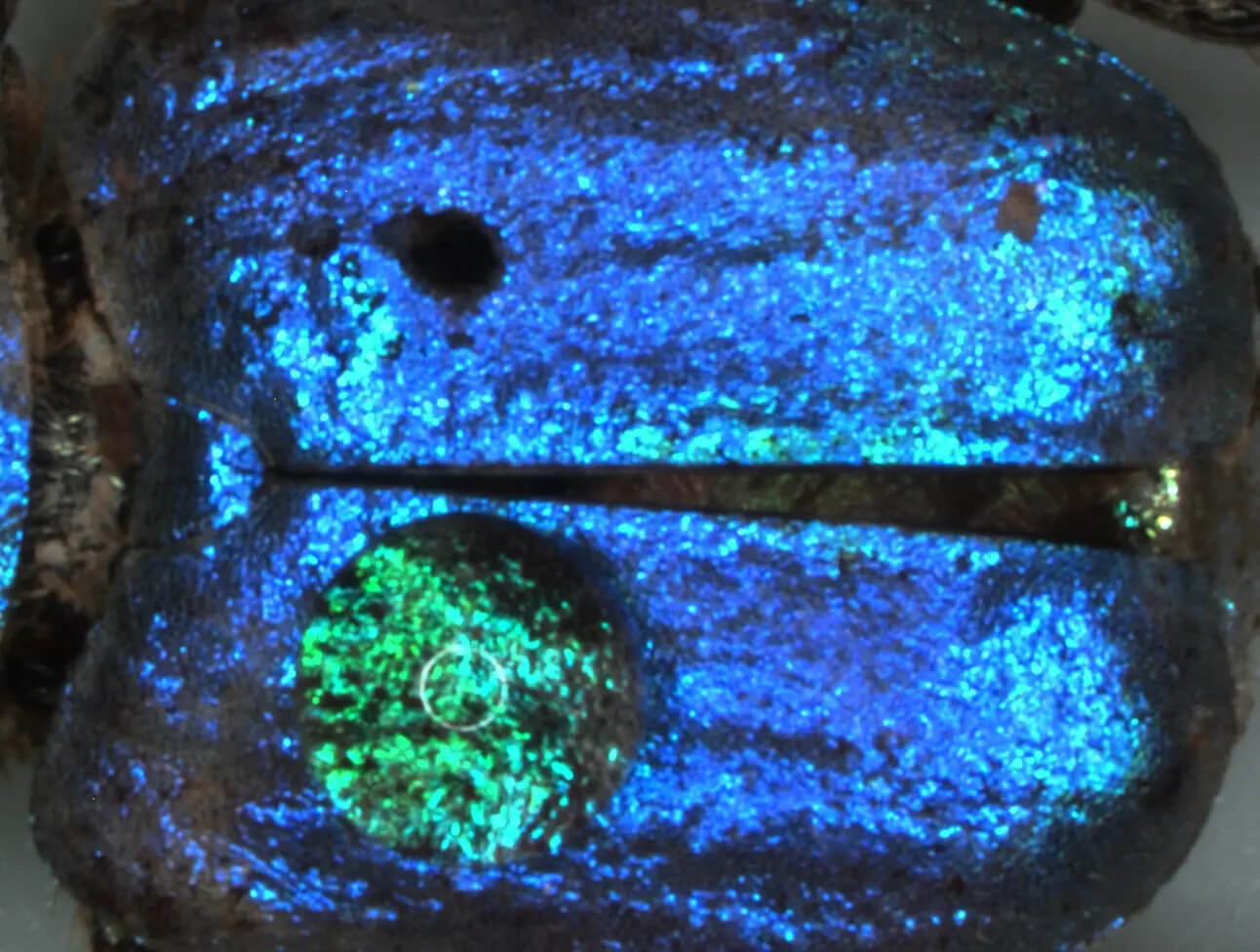
Structural Colour of a Hoplia Coerulea Beetle (Dr Sébastien Mouchet, University of Exeter – Physics – Natural Photonics group) – “The scales covering the forewings of this beetle display iridescent colours, due to light interference within the structure of the scales. These scales contain lots of tiny pores, filled with air, with a structure which makes different wavelengths of light reflect more brightly at different angles. A droplet of water on the scales can fill these pores, changing the reflected colour from blue to green.”
Another stunning image! By studying the physics of this colour-changing effect, researchers can understand how they occur and see if there are ways to mimic it in artificial structures.
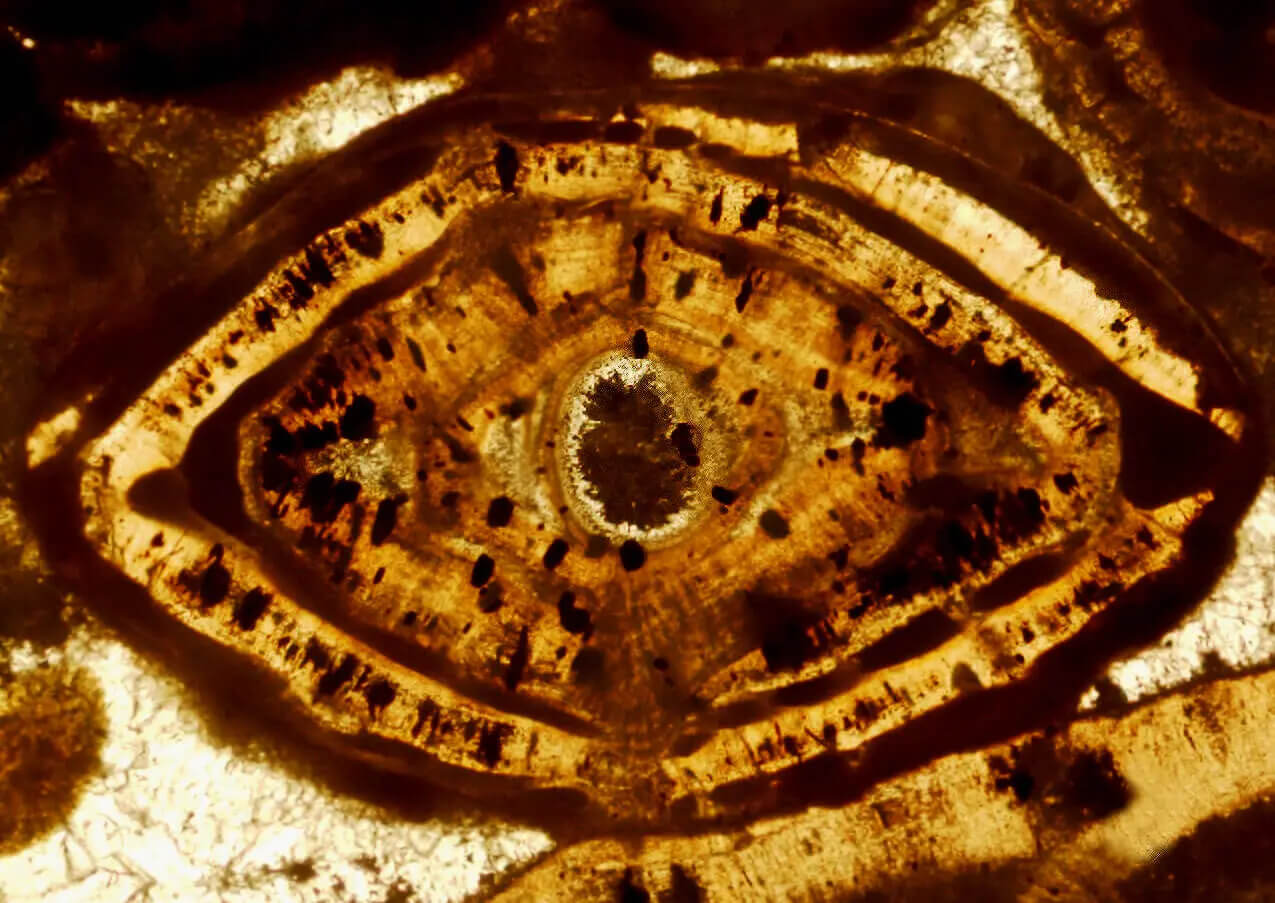
Larger foraminifera or Eye of Sauron? (Charlotte Beasley, University of Exeter (Cornwall campus) – Deep Time Global Change group) – “This is a larger foraminifera – a single-celled organism which lives in the tropical, shallow seas of the world. This particular one lived around 50 million years ago in what is now Tanzania. By studying the evolution of these organisms through time we can investigate how tropical areas respond to extreme climate events, such as rapid climate warming, and hopefully understand more about what a warmer future in the modern-day tropics may look like.”
Fantastic image! Such a fascinating combination of geology, evolution & climate change research!
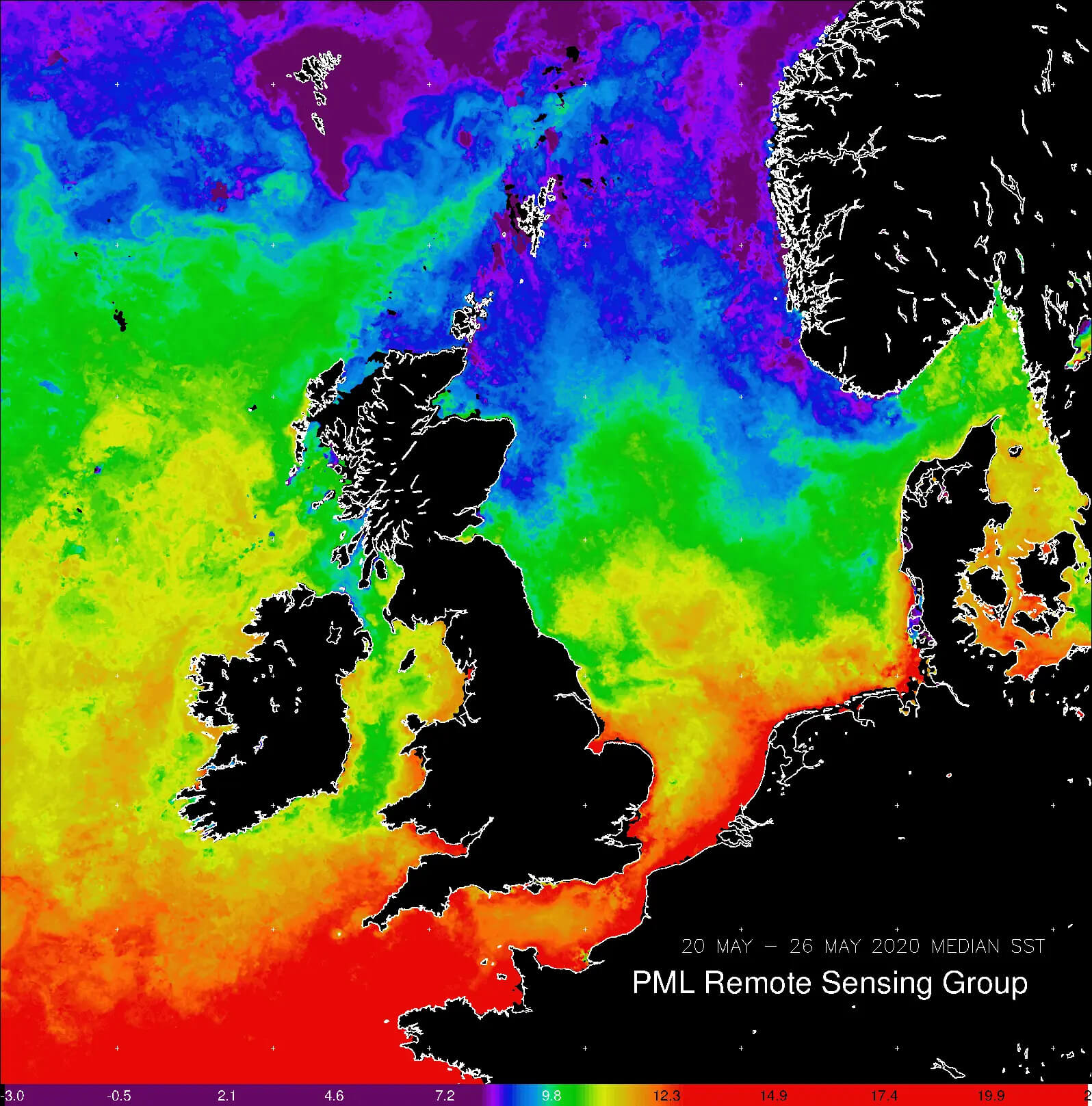
Sea surface temperature data (Dr Peter Miller, Plymouth Marine Laboratory) – “This image shows a composite of a weeks’ worth of sea surface temperature data obtained by satellite between 20th and 26th May 2020. Scientists at Plymouth Marine Laboratory receive the raw satellite data, which is processed into these images and can be used to monitor marine conditions and identify interesting or unusual currents or other thermal features.”
Now that’s some beautiful data! Also, it’s a wonderful example of how important maths & data science is in scientific research – not only to translate the massive arrays of numbers from the satellite into something meaningful, but then to analyse all this data using the known equations / computer models!
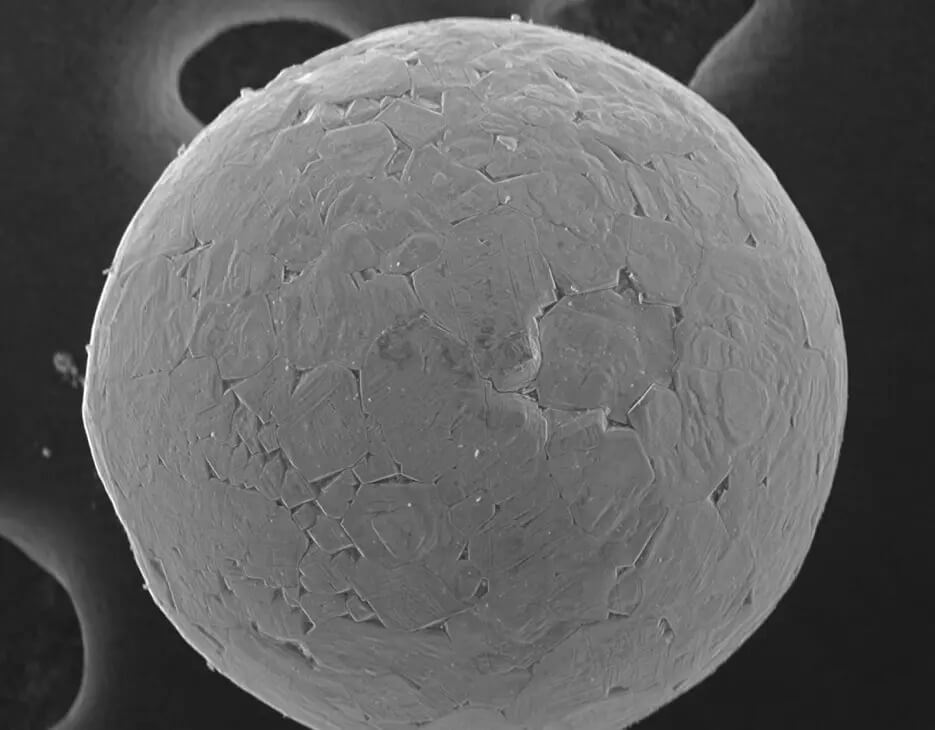
High-temperature Melted Spherule (Prof Sean Matt, Tom Wilson, Dr Chris Brunt, University of Exeter – Astrophysics) – “A High-temperature Melted Spherule, produced when the meteorite that formed Barringer Crater impacted with the Earth throwing molten metal across the landscape which cooled to form these microscopic spheres. This Spherule was found by Prof Sean Matt and imaged using an electron microscope.”

Ocean chlorophyll data (Dr Peter Miller, Plymouth Marine Laboratory) – “This image shows a composite of a weeks’ worth of chlorophyll data estimated by ocean colour satellites between 23rd and 29th May 2020. Chlorophyll data is an important indicator for how productive the ocean is. Chlorophyll is the photosynthetic pigment found in all plant life including marine phytoplankton; the base of the marine food web. High concentration of chlorophyll implies a high abundance of phytoplankton and therefore, a high level of primary production. Plankton blooms can be seen developing to the west and southeast of Ireland and in the middle of the English Channel.”
Although this image looks similar on first glance to the other submission in this exhibition, the science shown here is vastly different. One fascinating thing to notice is that the scale (bottom of the image) is logarithmic – and why is that? Because plankton reproduces exponentially! This means that purple in this image shows a phytoplankton concentration which is around 1000 times smaller than the concentration shown by the brown colouring! Scale is hugely important in scientific graphs/images, and can usually tell us something important about the science behind what we’re seeing.
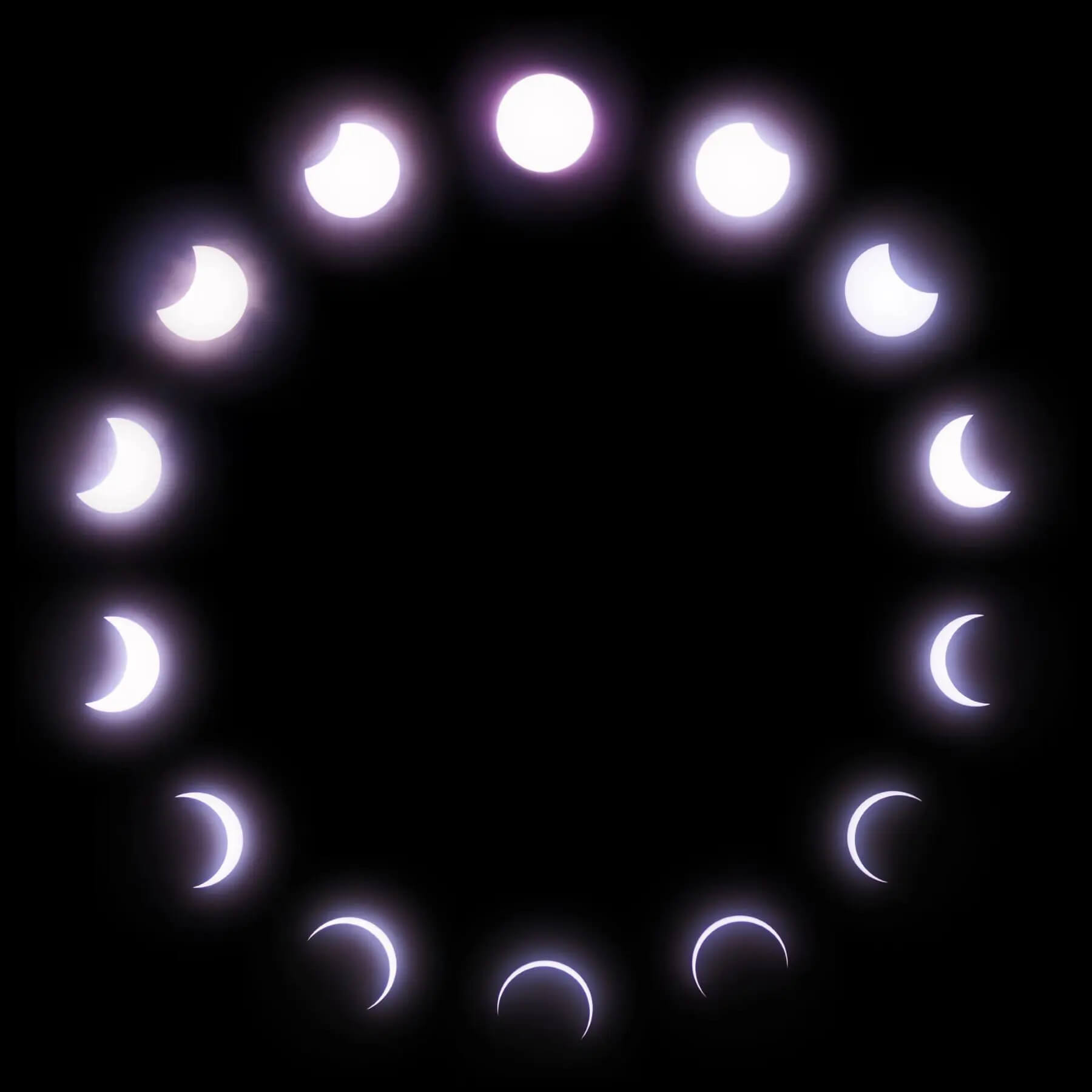
Kong You Liow (University of Exeter – Astrophysics group) jointly with fellow eclipse-gazer Jie Min Goh – “Snapshots of the solar eclipse taken on the 26th December 2019 in Malacca, Malaysia. A solar eclipse happens when the Moon blocks the sunlight, casting a shadow on Earth. This solar eclipse was an annular type, which means the Sun, Moon, and Earth were aligned, but the Moon had a smaller apparent size than the Sun, forming a ring. My research is on numerical simulation of star formation, focusing mainly on stars in young stellar clusters – we can understand a lot about distant stars by our knowledge of our star, the Sun. This image was captured and edited by fellow eclipse-gazer, Jie Min.”
Stunning! The next solar eclipse like this one pictured will occur for the UK in August 2026. We might even have a Science Centre you can visit by then!
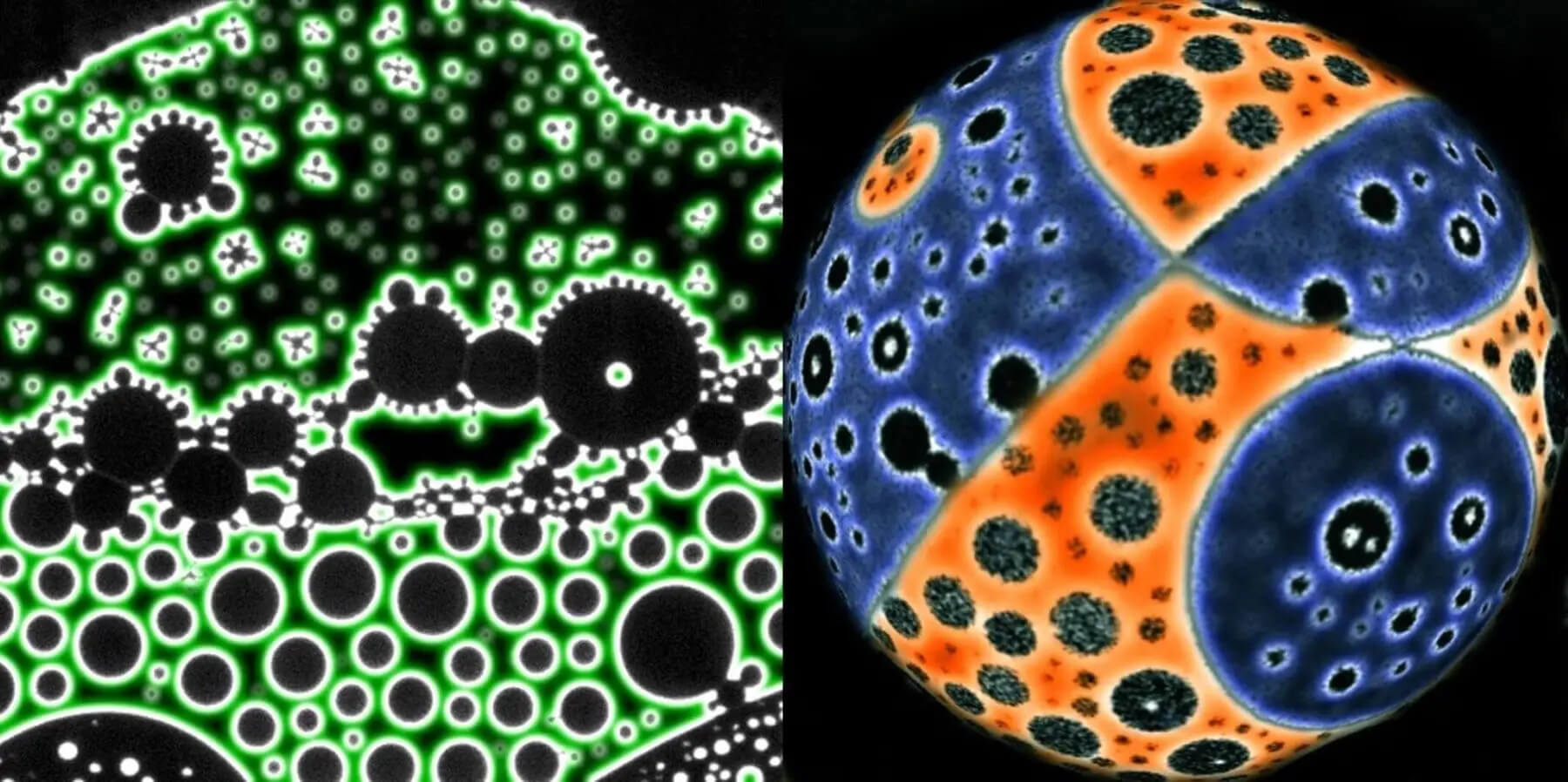
Microdomains in lipid membranes (Dr Peter G. Petrov and Dr Bob-Dan Lechner, University of Exeter – Physics – Biomedical Physics Group) – “Lipids are molecules which form the building blocks of living cells, and we are interested in their role in the cell membranes. These images show artificial membranes, formed of different types of lipid molecules on a water surface. We have artistically enhanced the images to highlight the microscopic ‘patches’ of lipids, known as microdomains. The images were made using fluorescence microscopy, a modern technique which involves shining light on a substance which fluoresces – which means it re-emits the light. This re-emitted light is then detected, and we can build up a much clearer picture of the material we’re studying than by simply using an optical microscope.”
Such fascinating and beautiful images! And another fantastic example of multidisciplinary STEMM research: applying techniques from physics to study biological / chemical samples (and with applications in medicine).
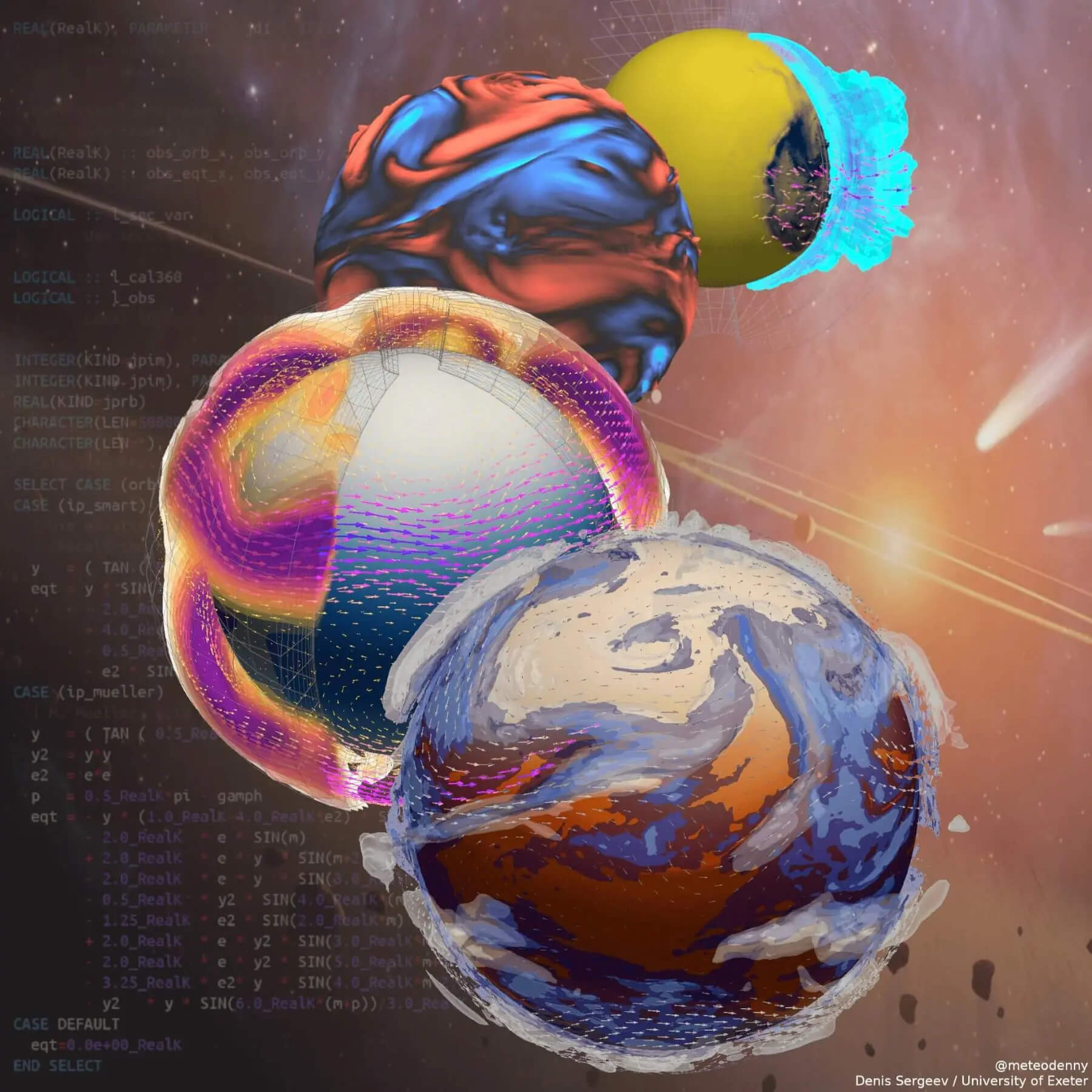
Exoplanetary atmospheres (Dr Denis Sergeev, University of Exeter – Mathematics, working with the Met Office and the University’s Astrophysics group) – “Exoplanets are planets that exist outside of our solar system, orbiting distant stars. Scientists at the University of Exeter and the Met Office use state-of-the-art 3D climate models to understand the key physical processes which control the atmospheres of these exoplanets. Exoplanetary atmospheres are diverse, and many of them behave in a completely unfamiliar way, compared to Earth. This image shows results of several computer simulations given various planetary and stellar parameters. Astrophysicists and climate scientists work together to analyse these simulated atmospheres by looking at temperatures, winds, cloudiness and other meteorological variables – testing and developing theories of climate processes.”
What a stunning image! Love how the computer code used to make these simulations forms part of the background. It’s also another wonderful example of interdisciplinary research; astrophysicists and climate scientists using methods from mathematics and computer science, to help solve problems in both areas of research!